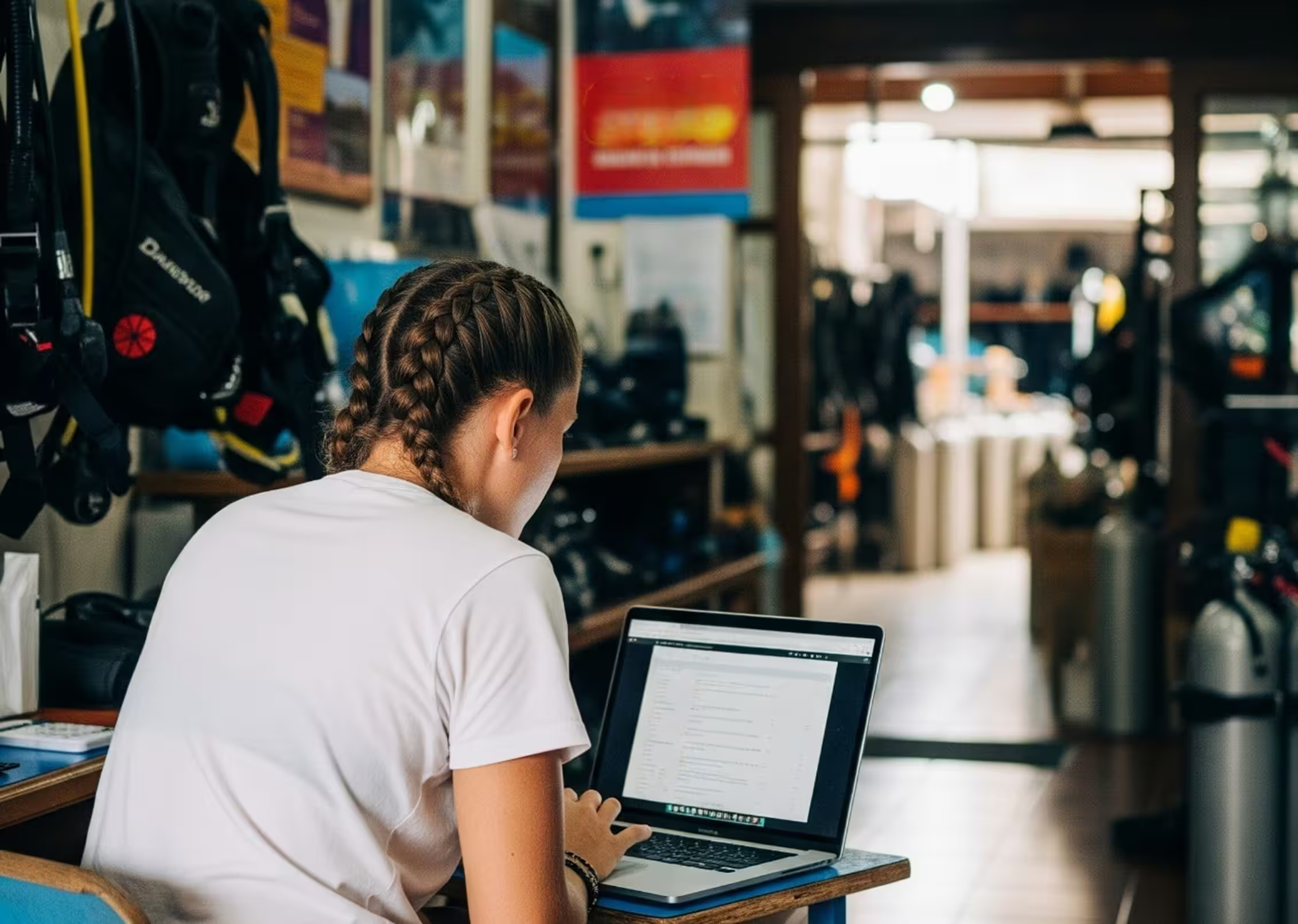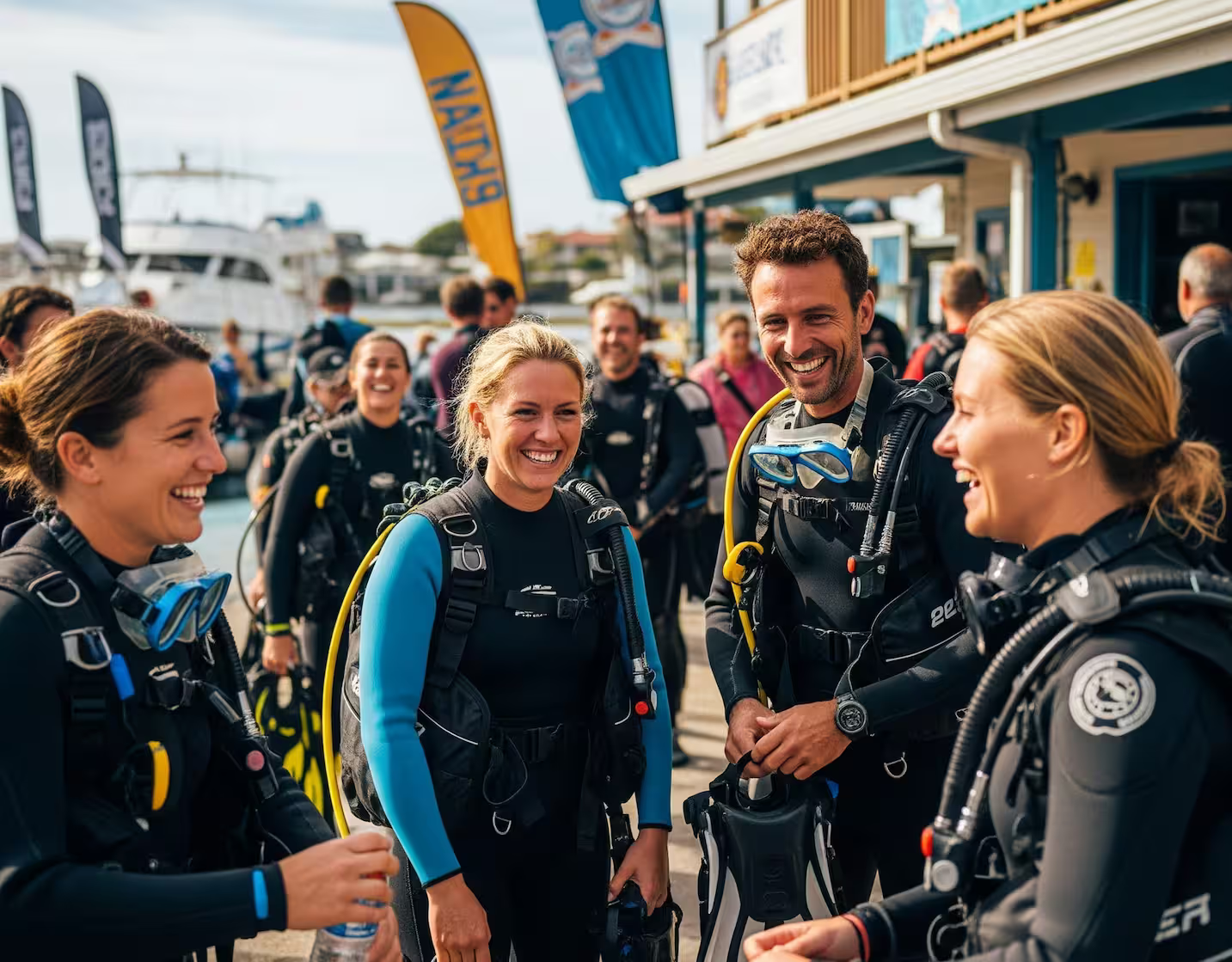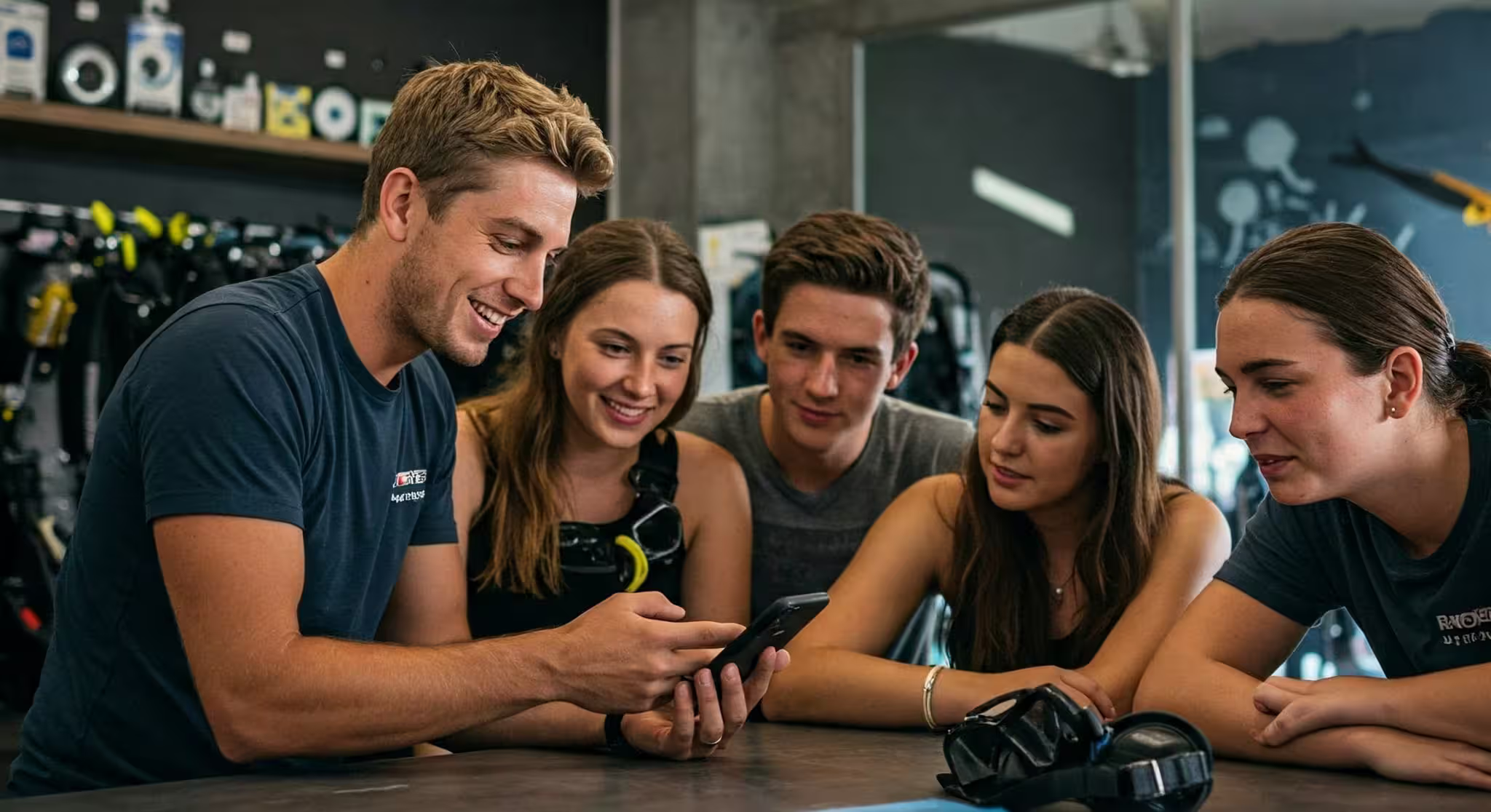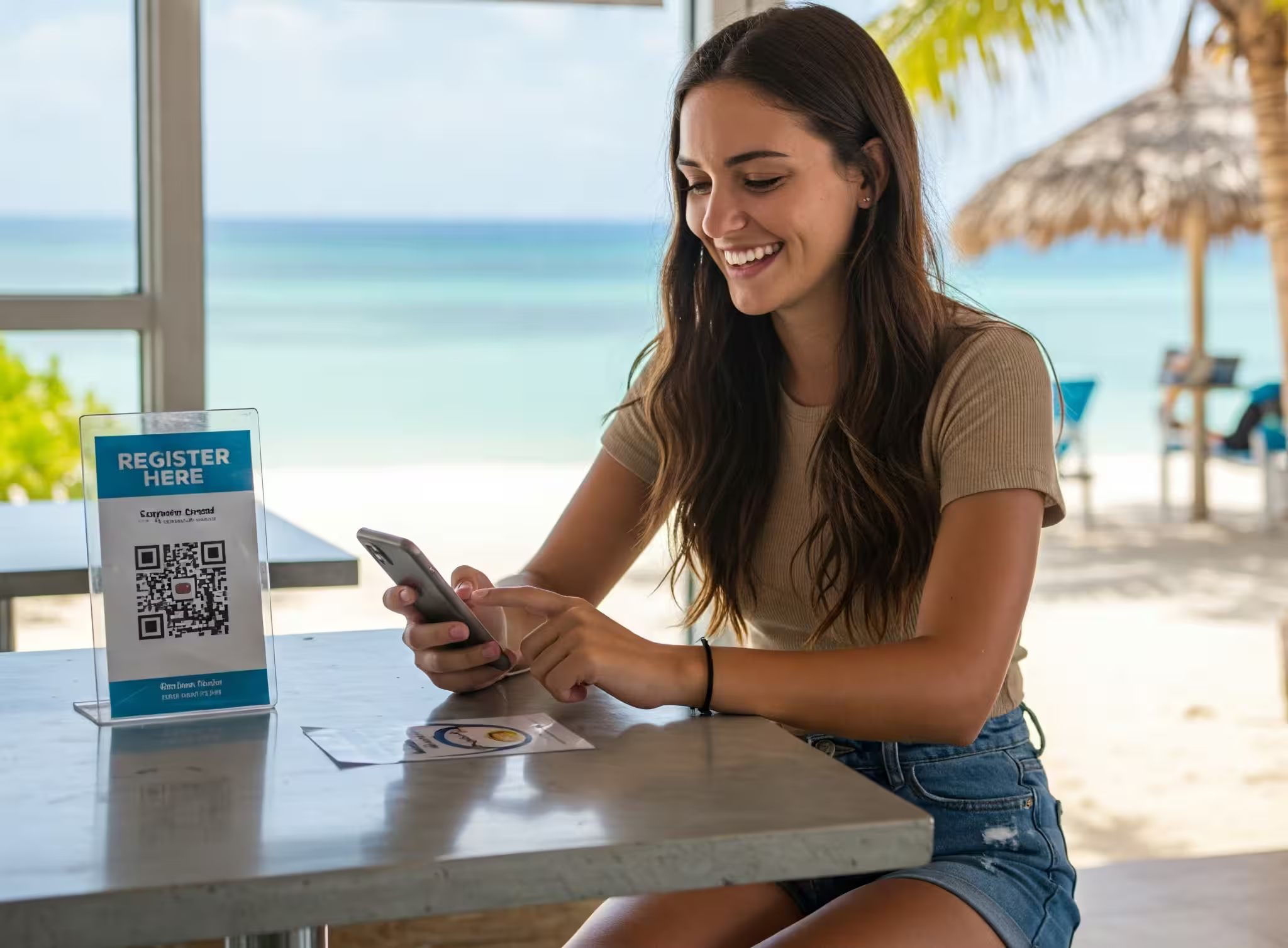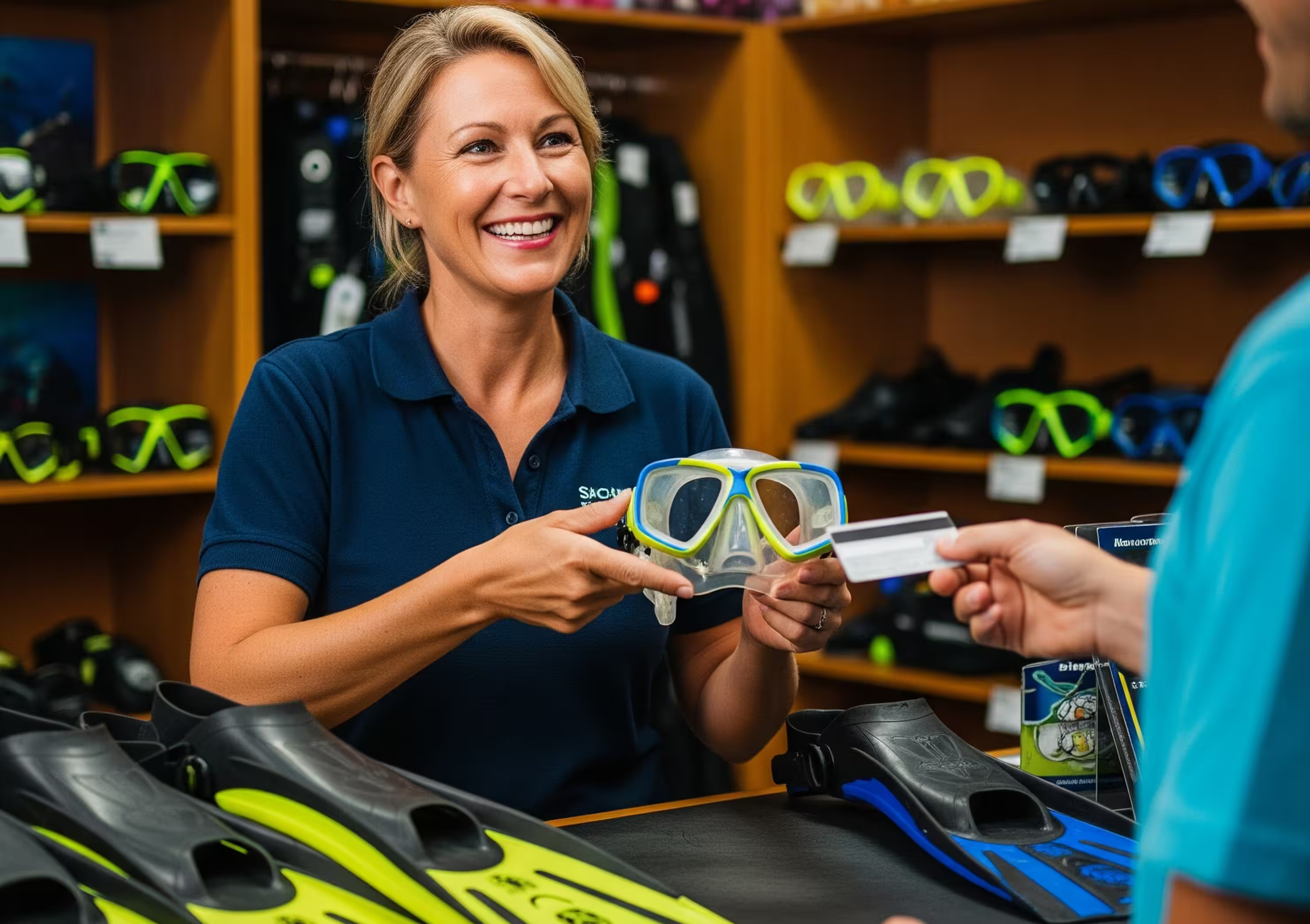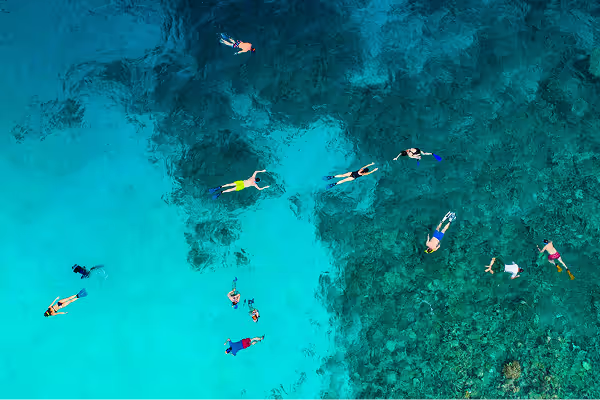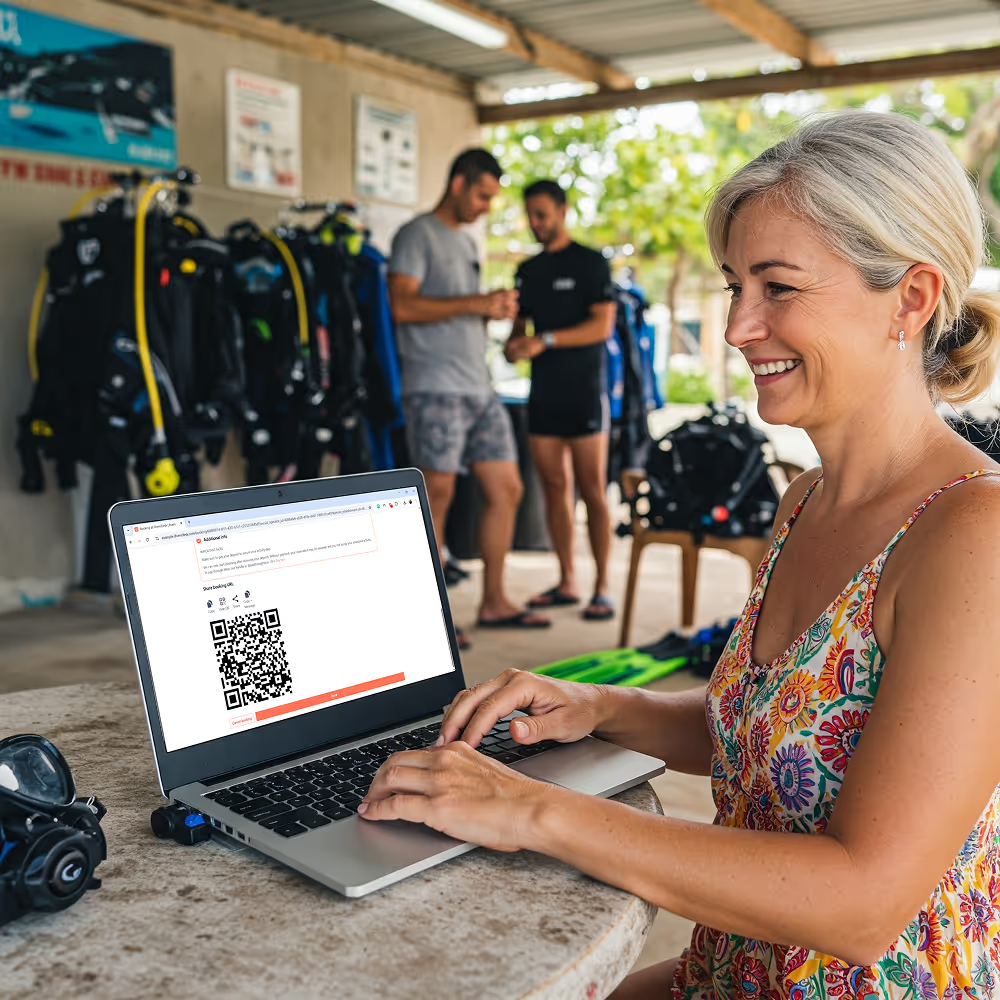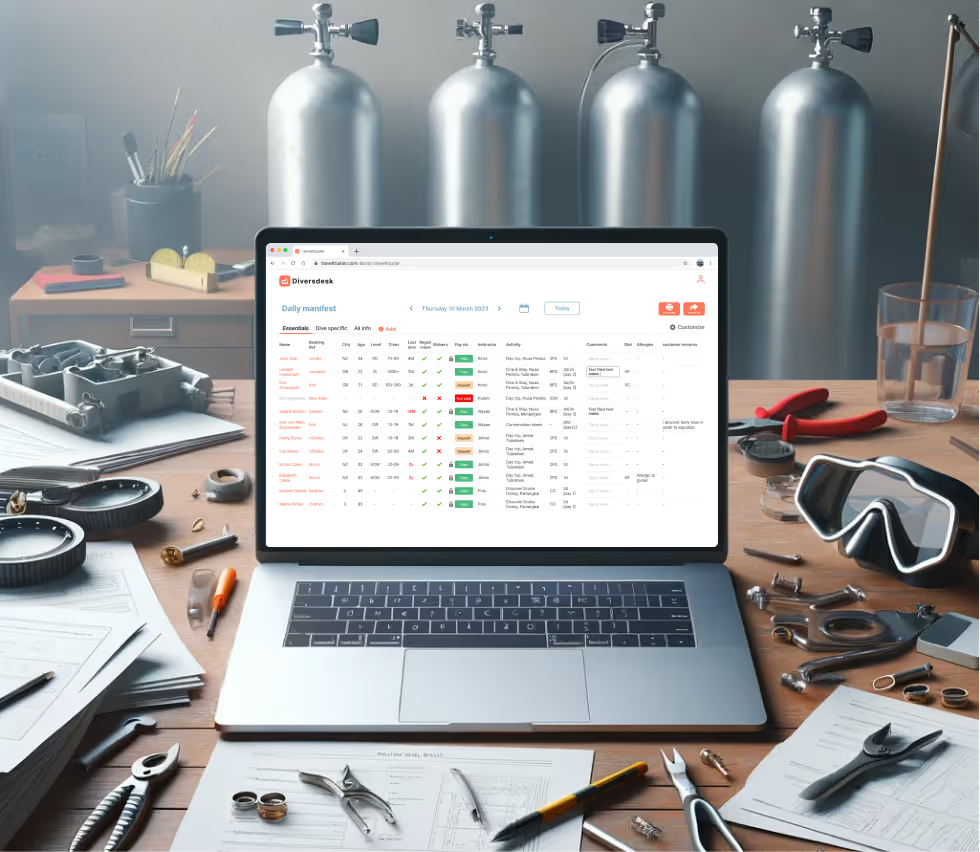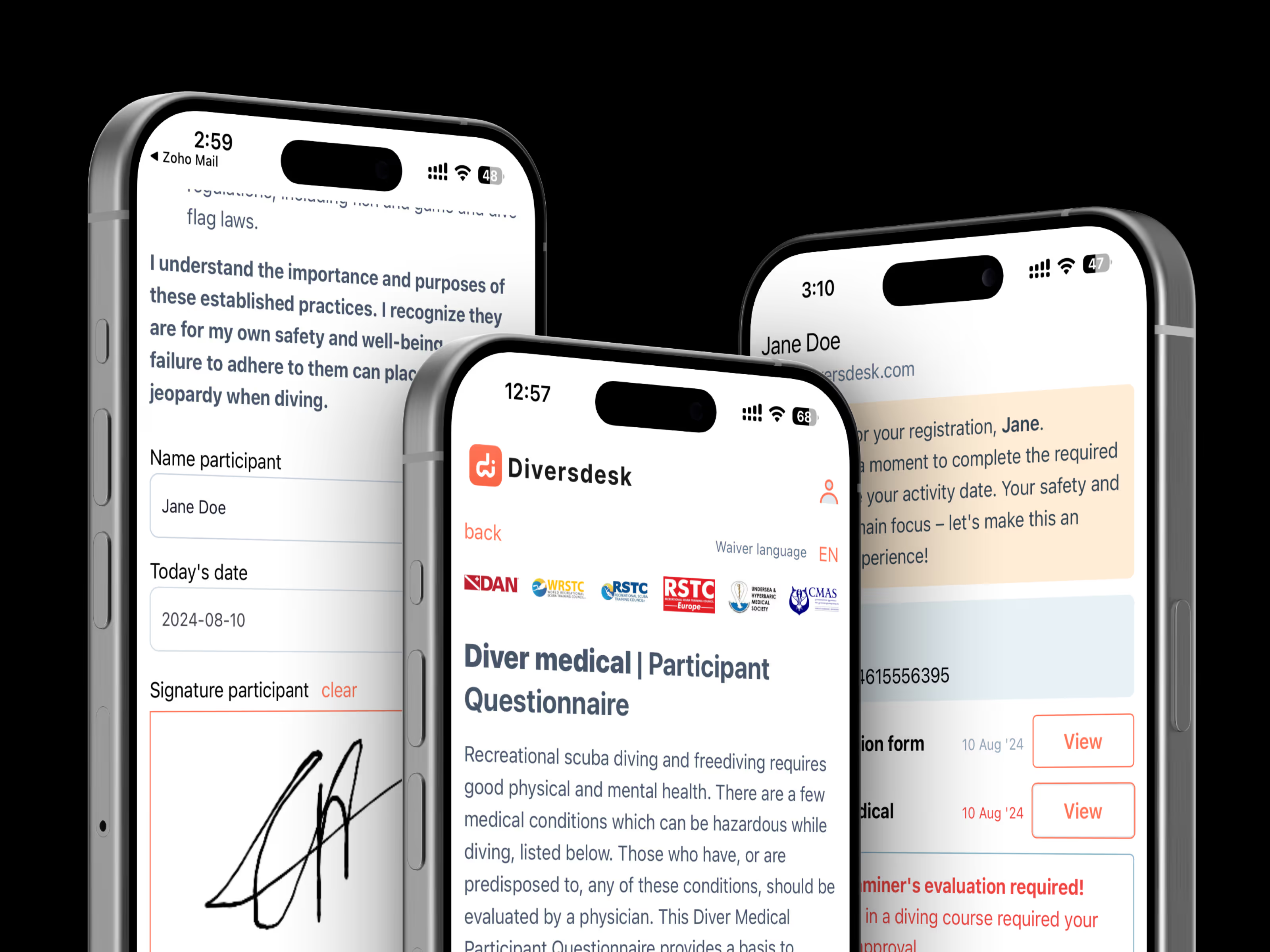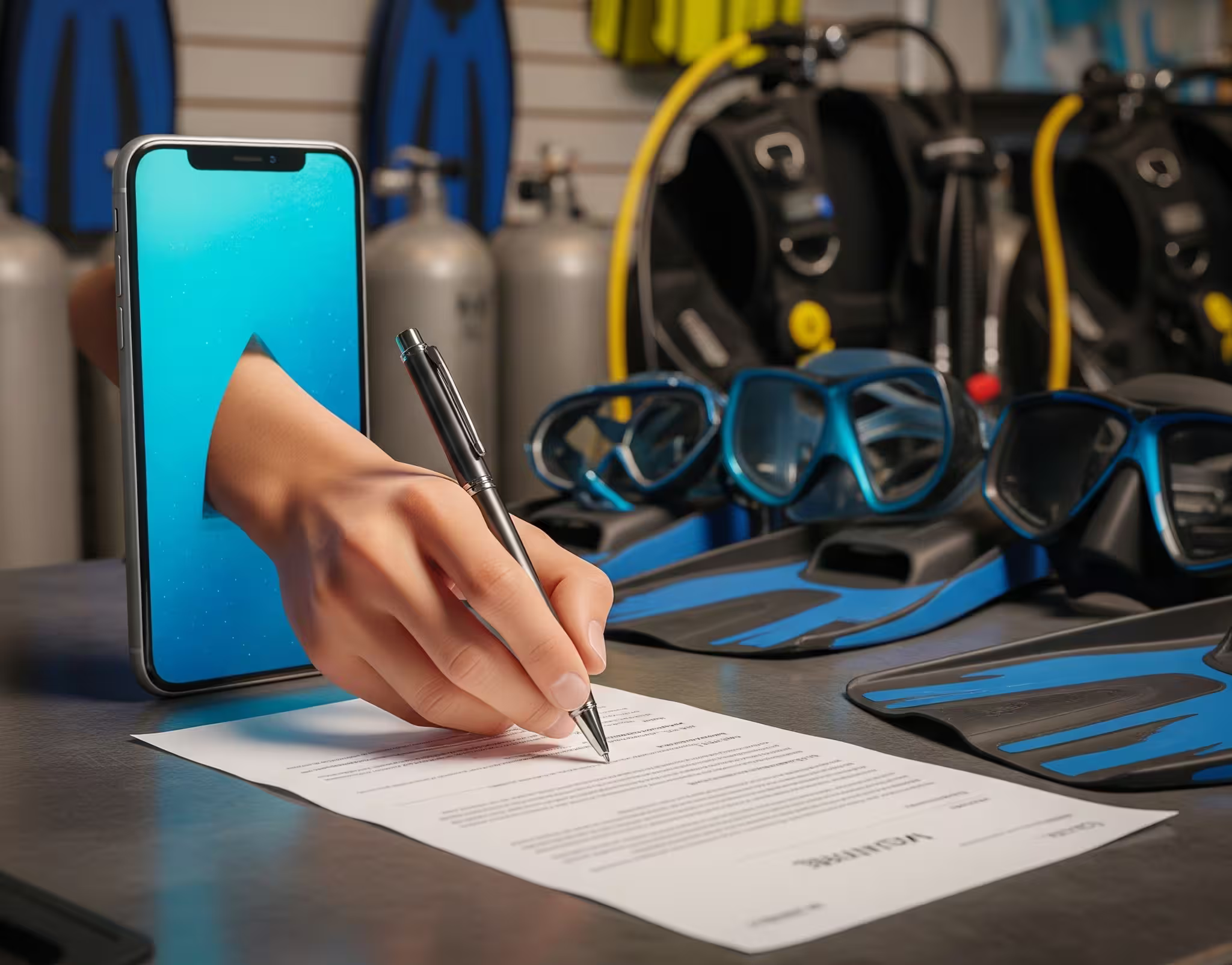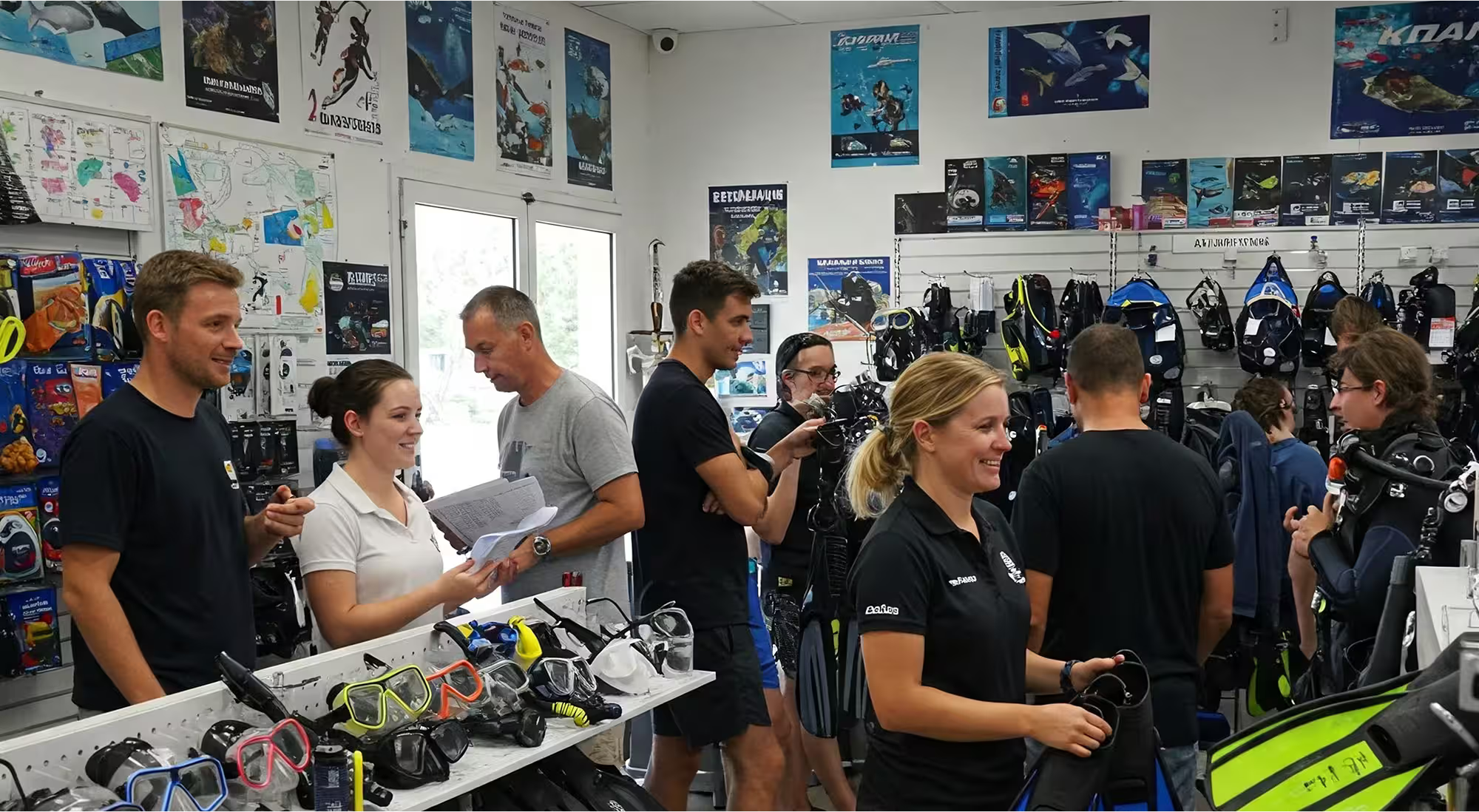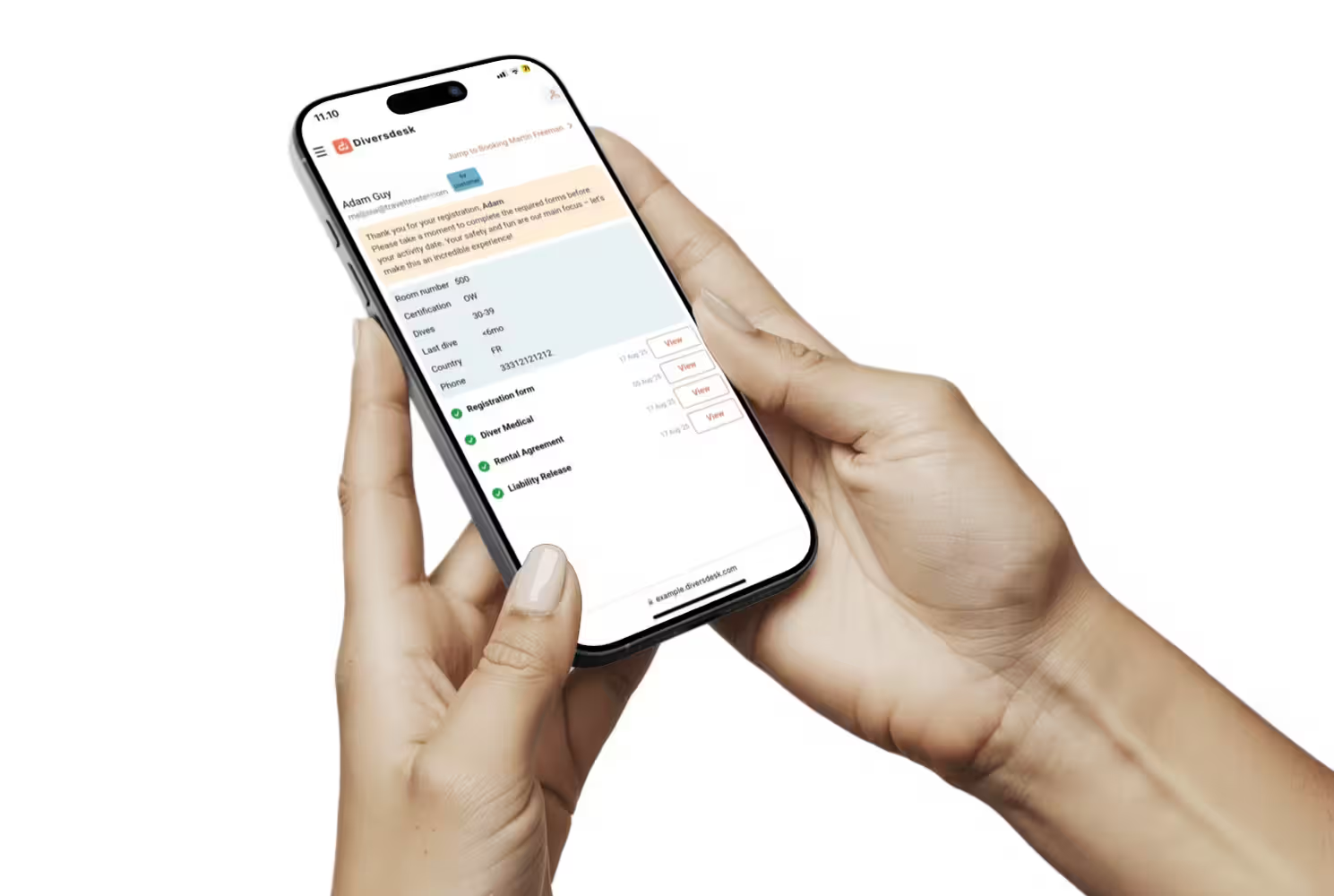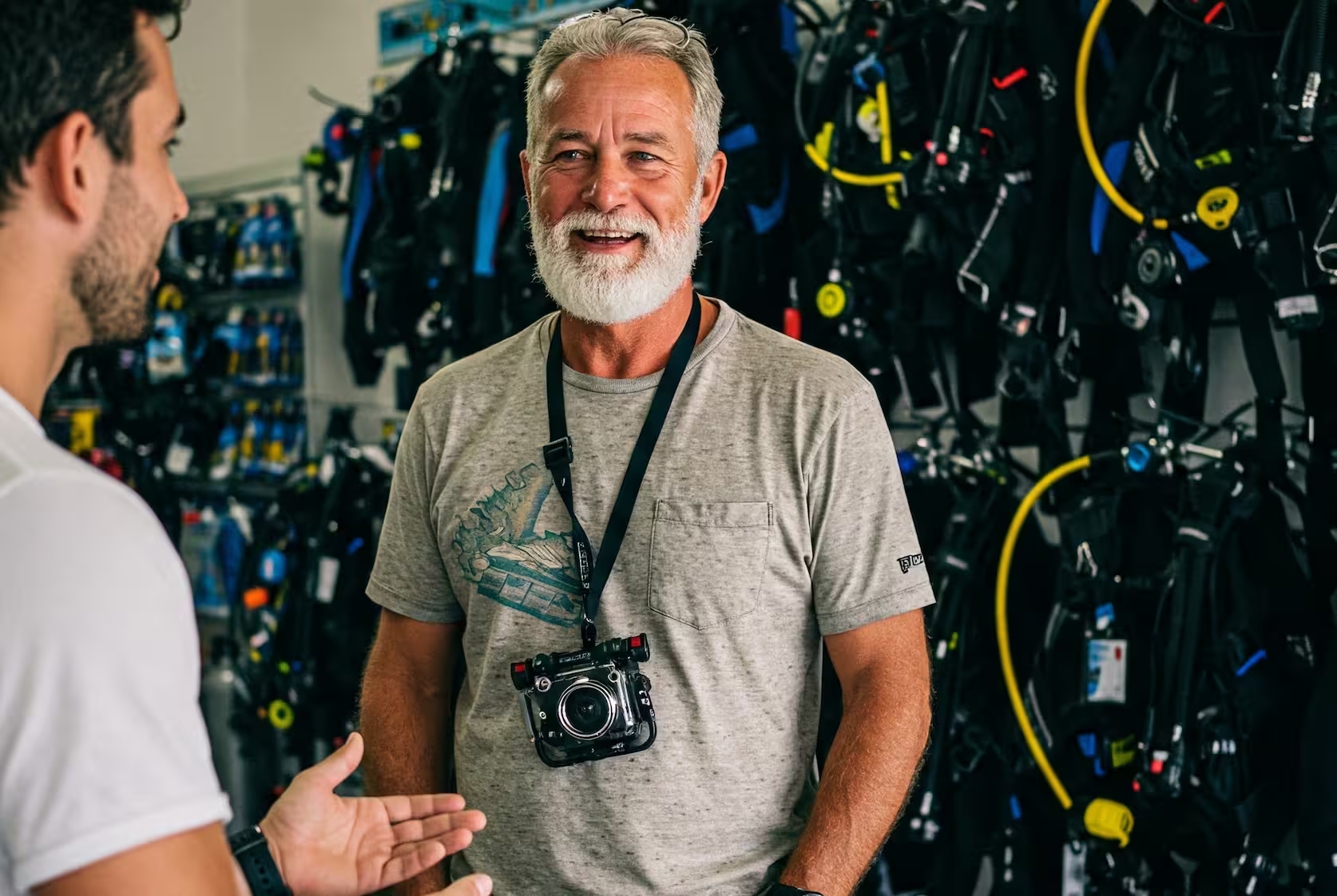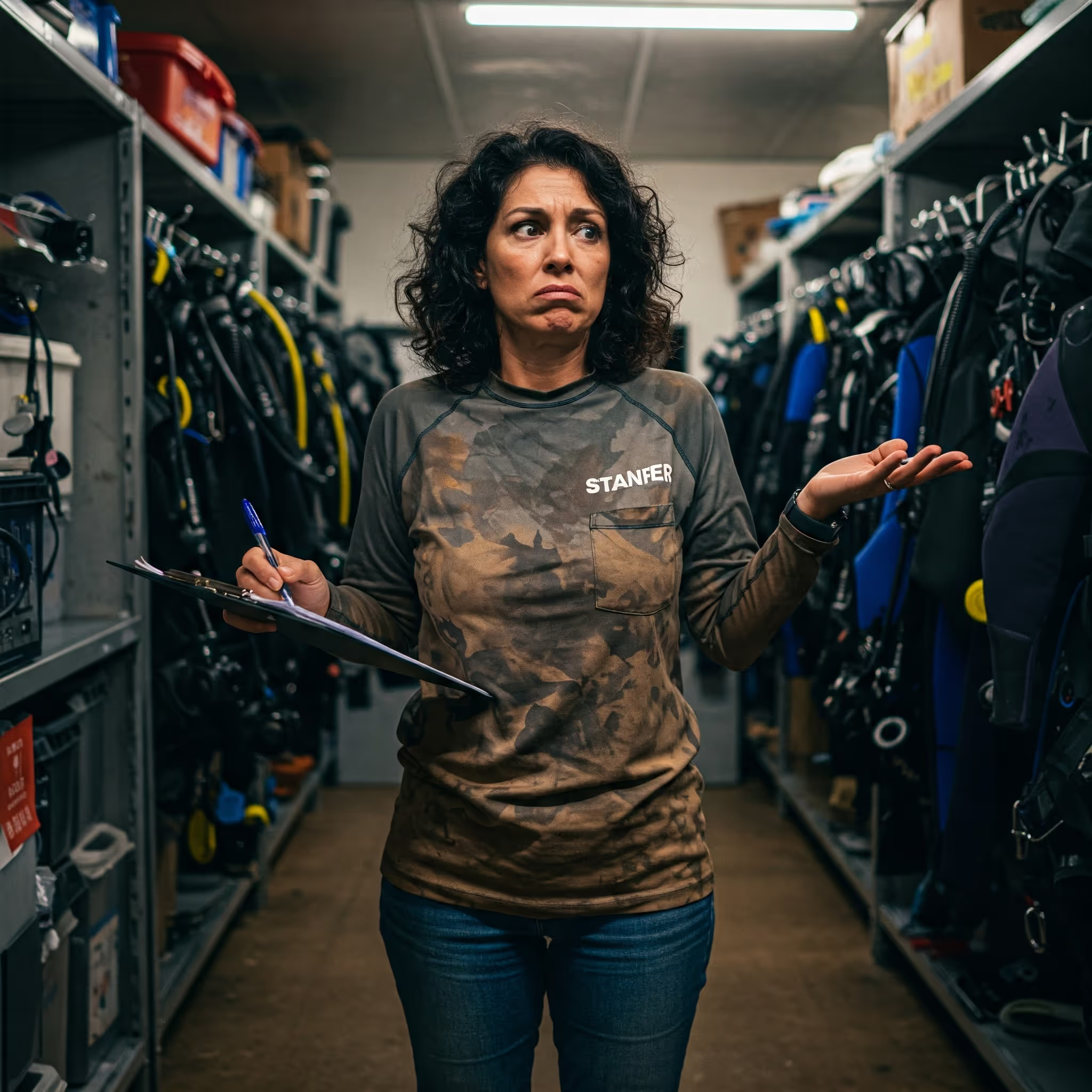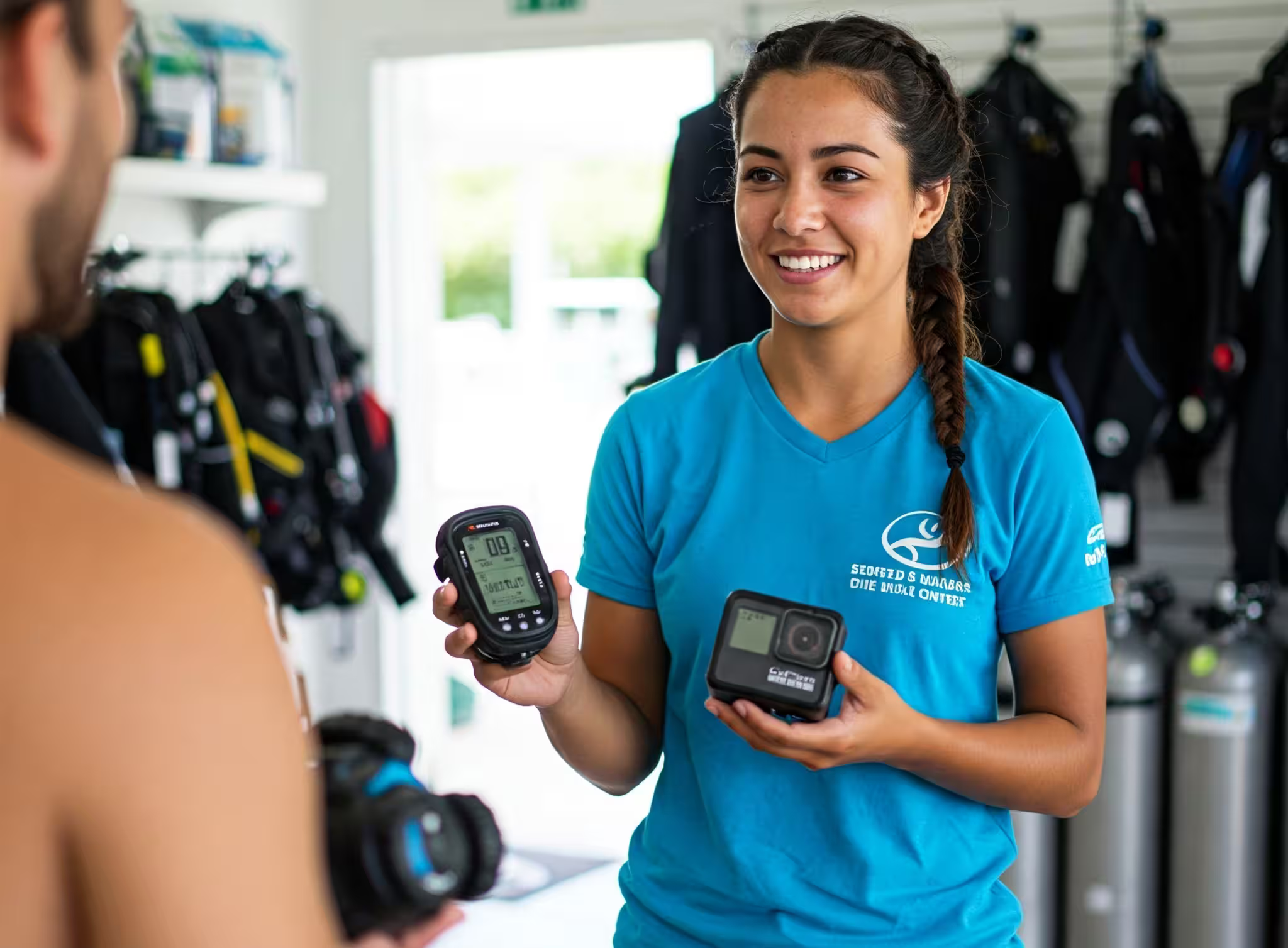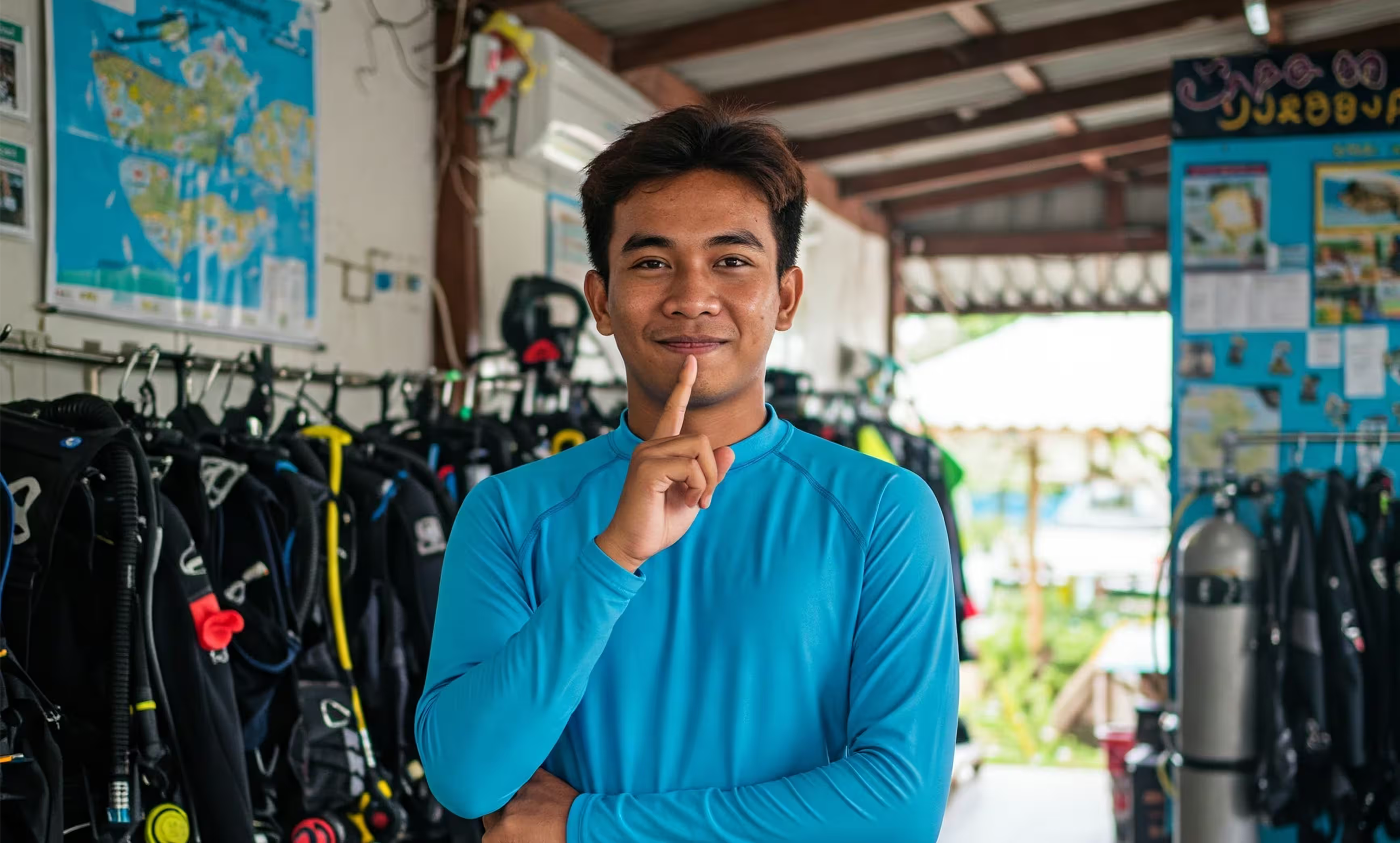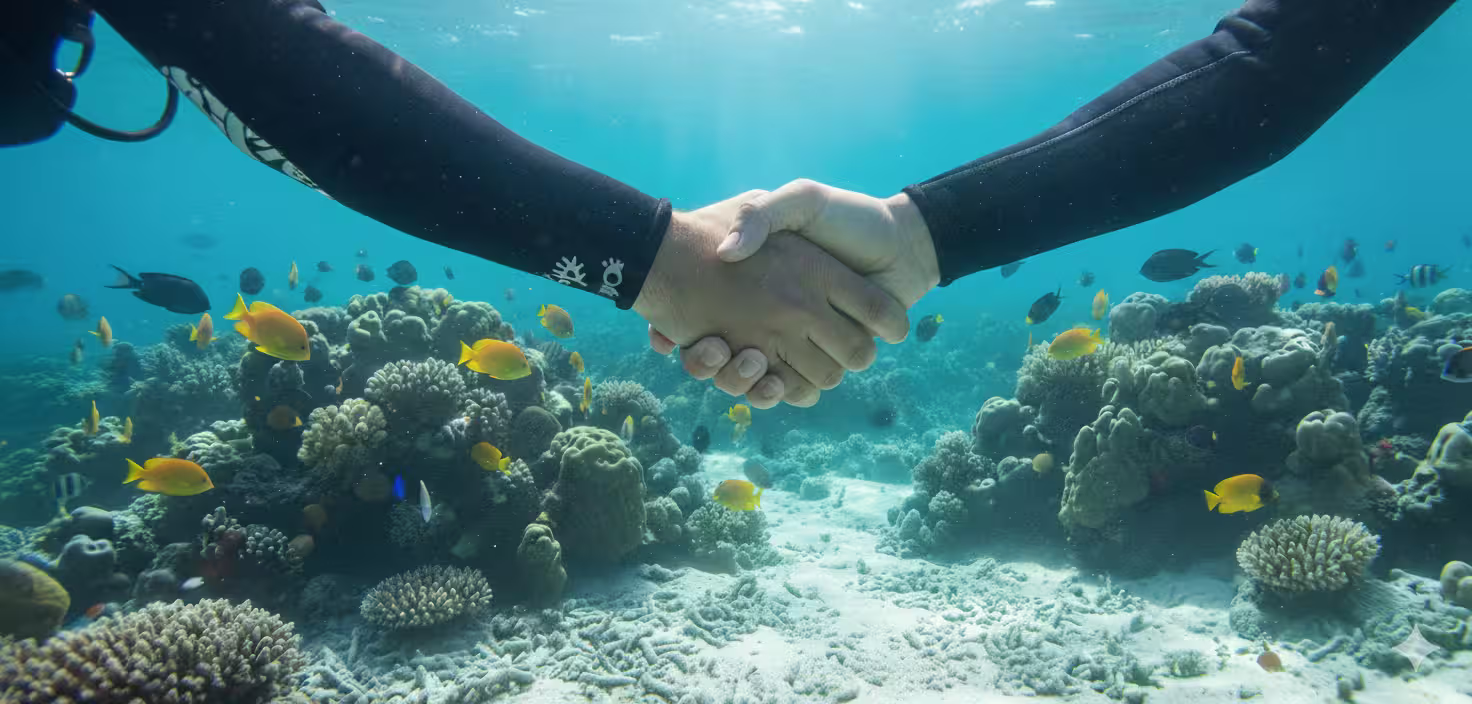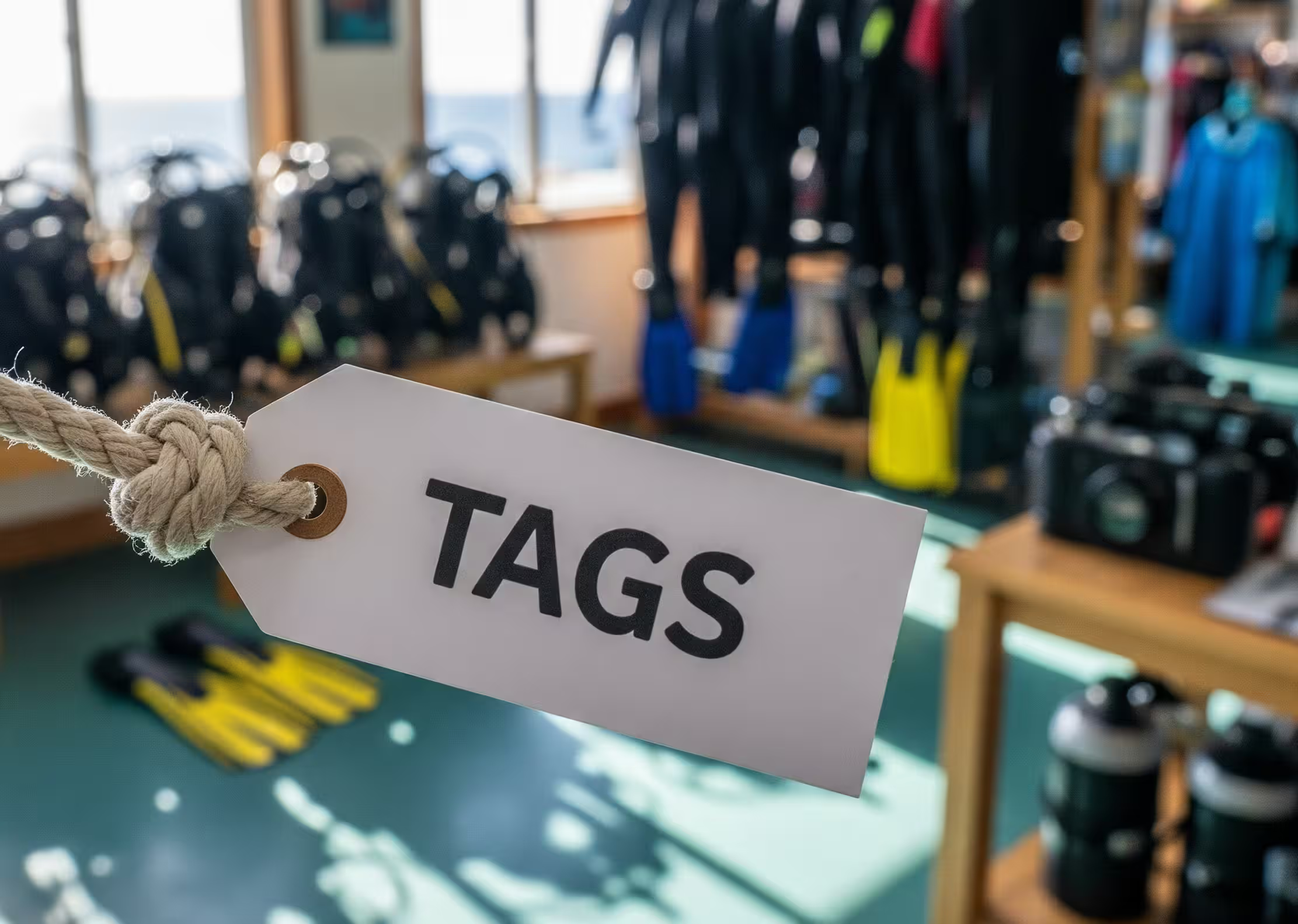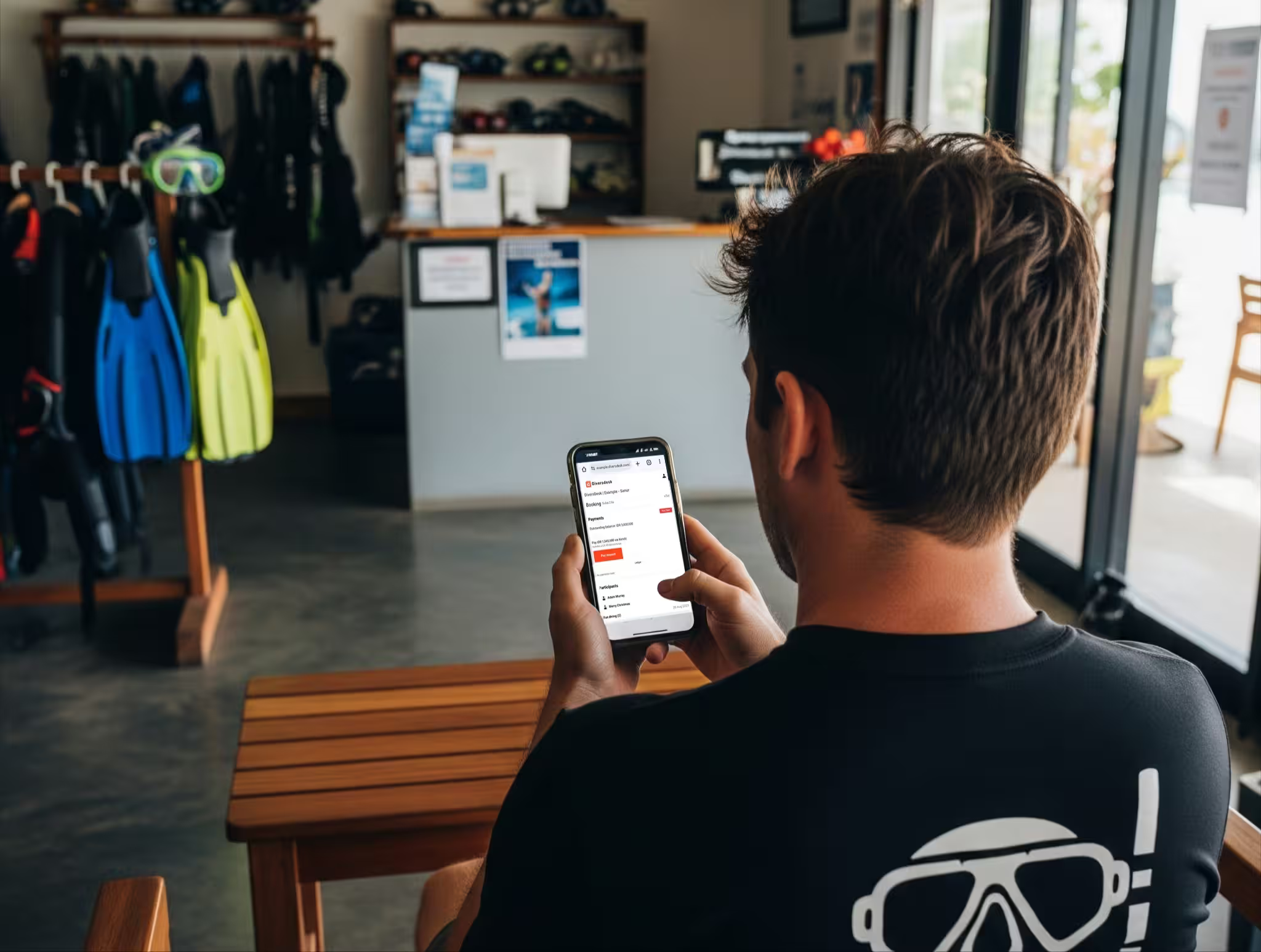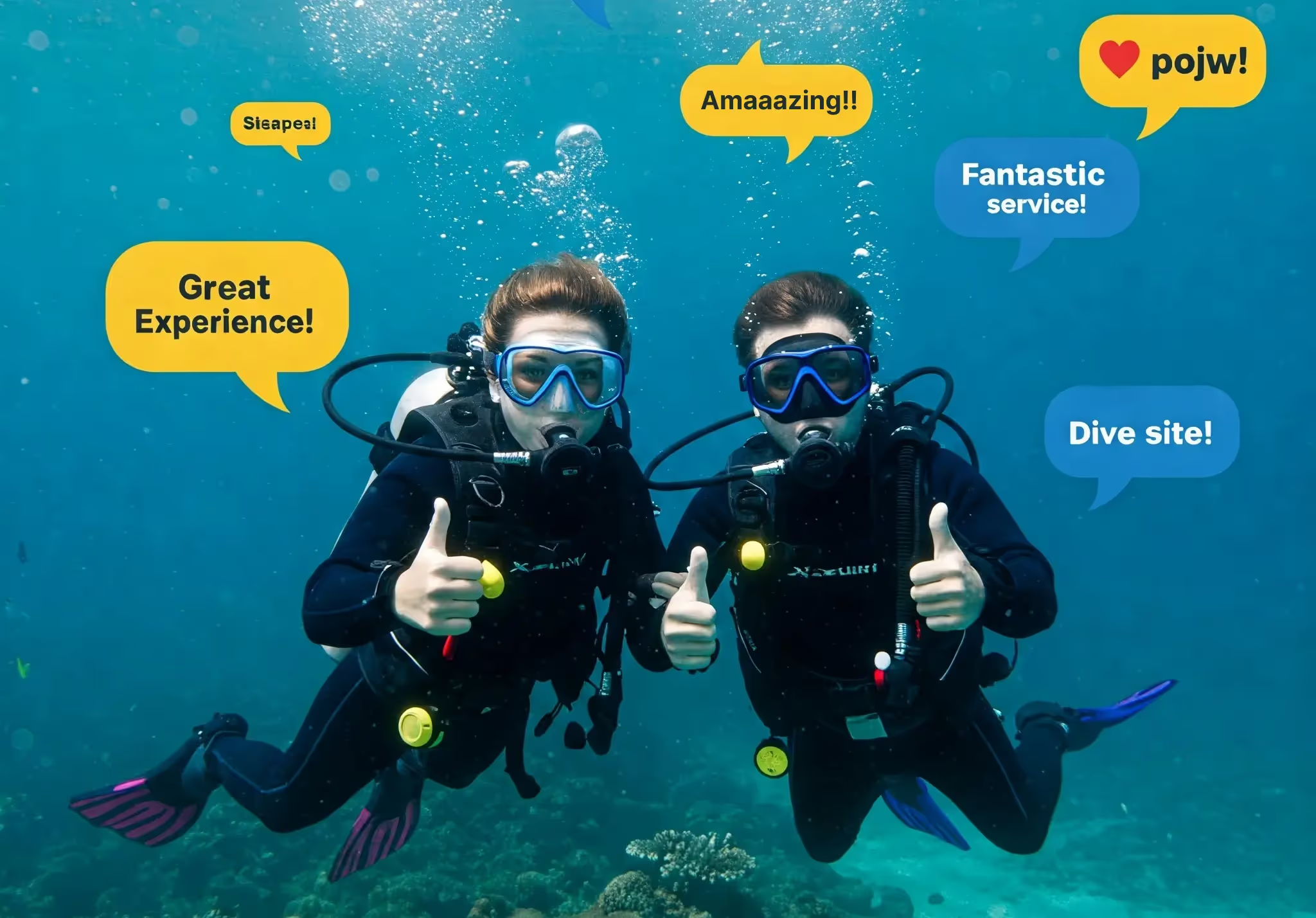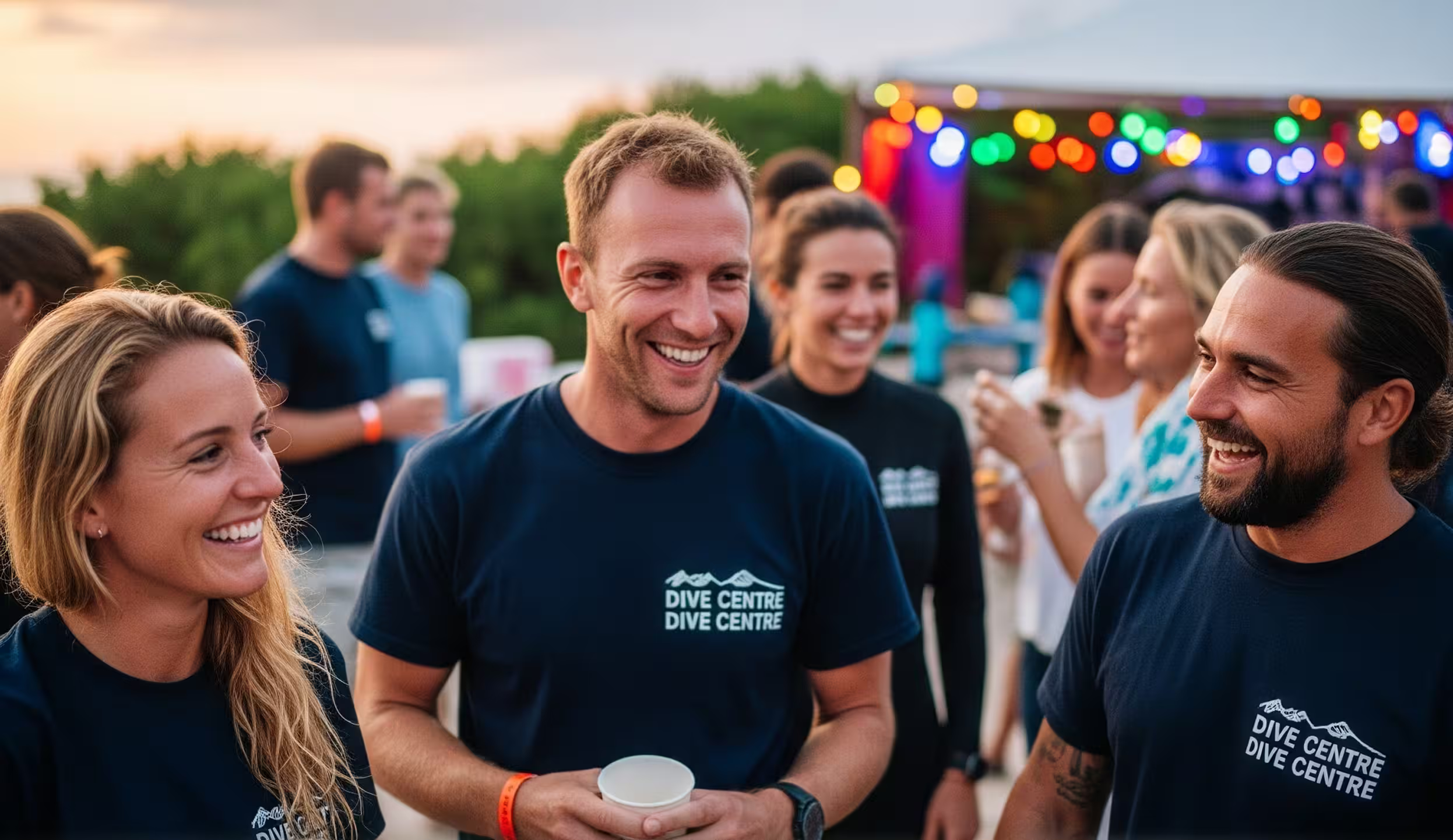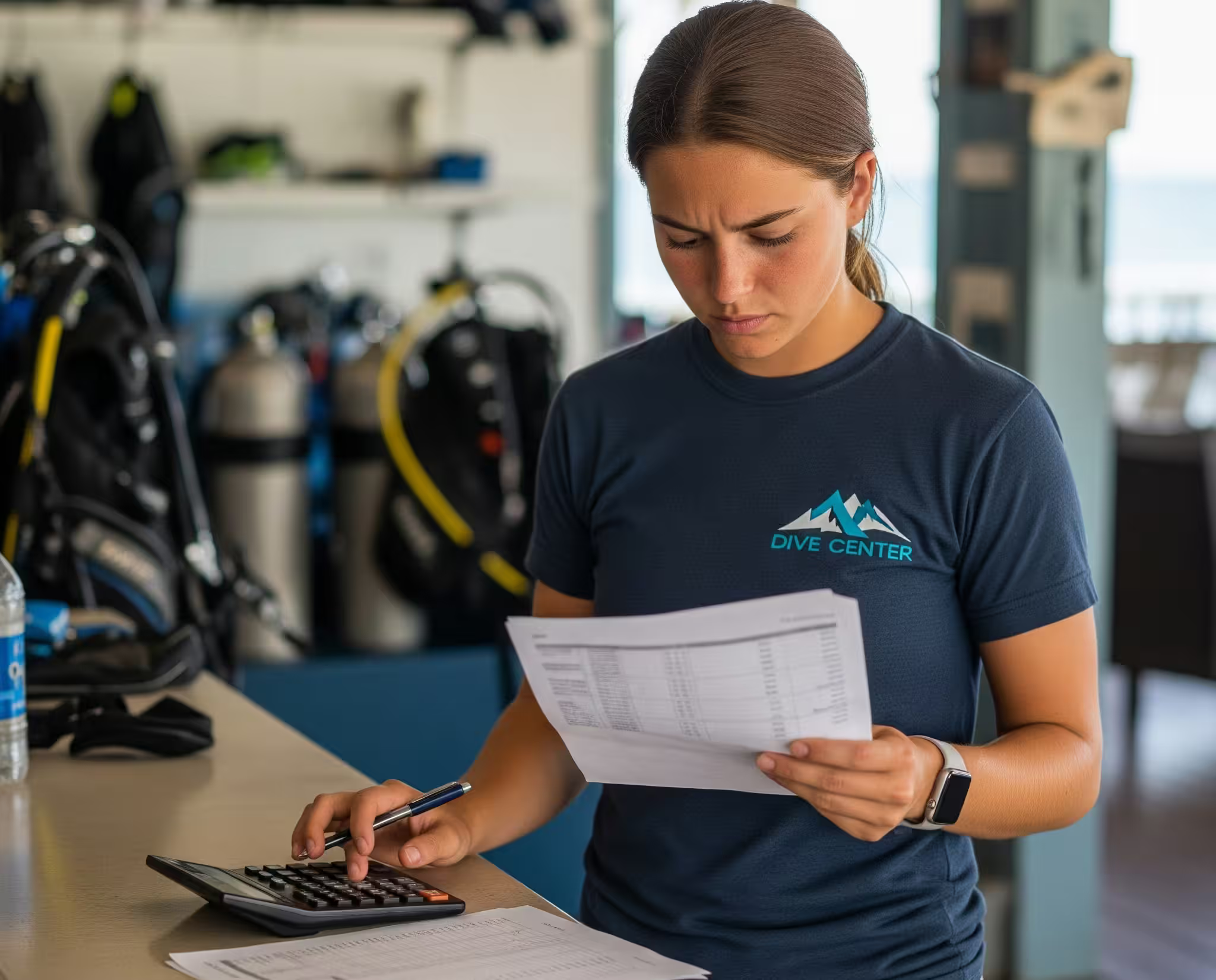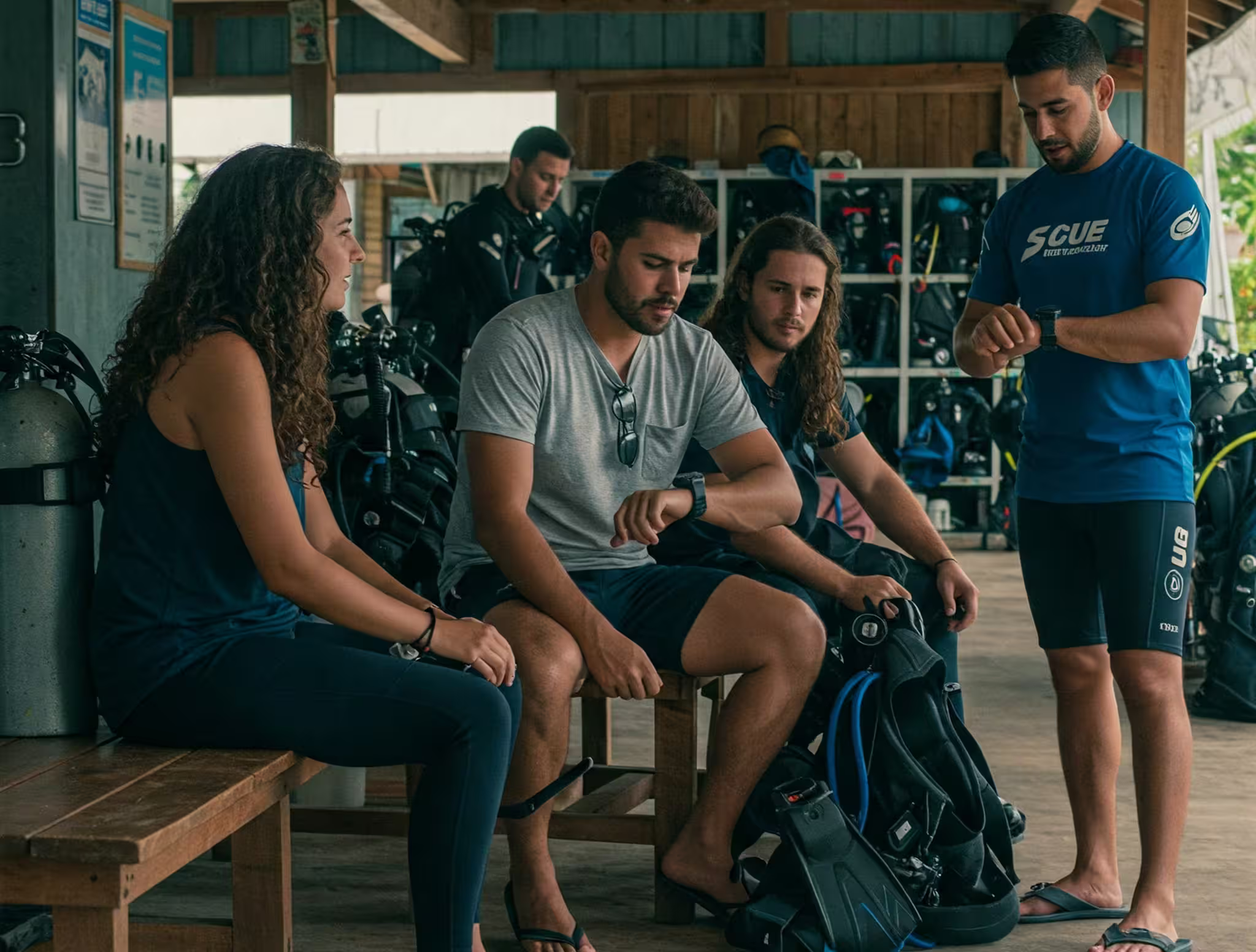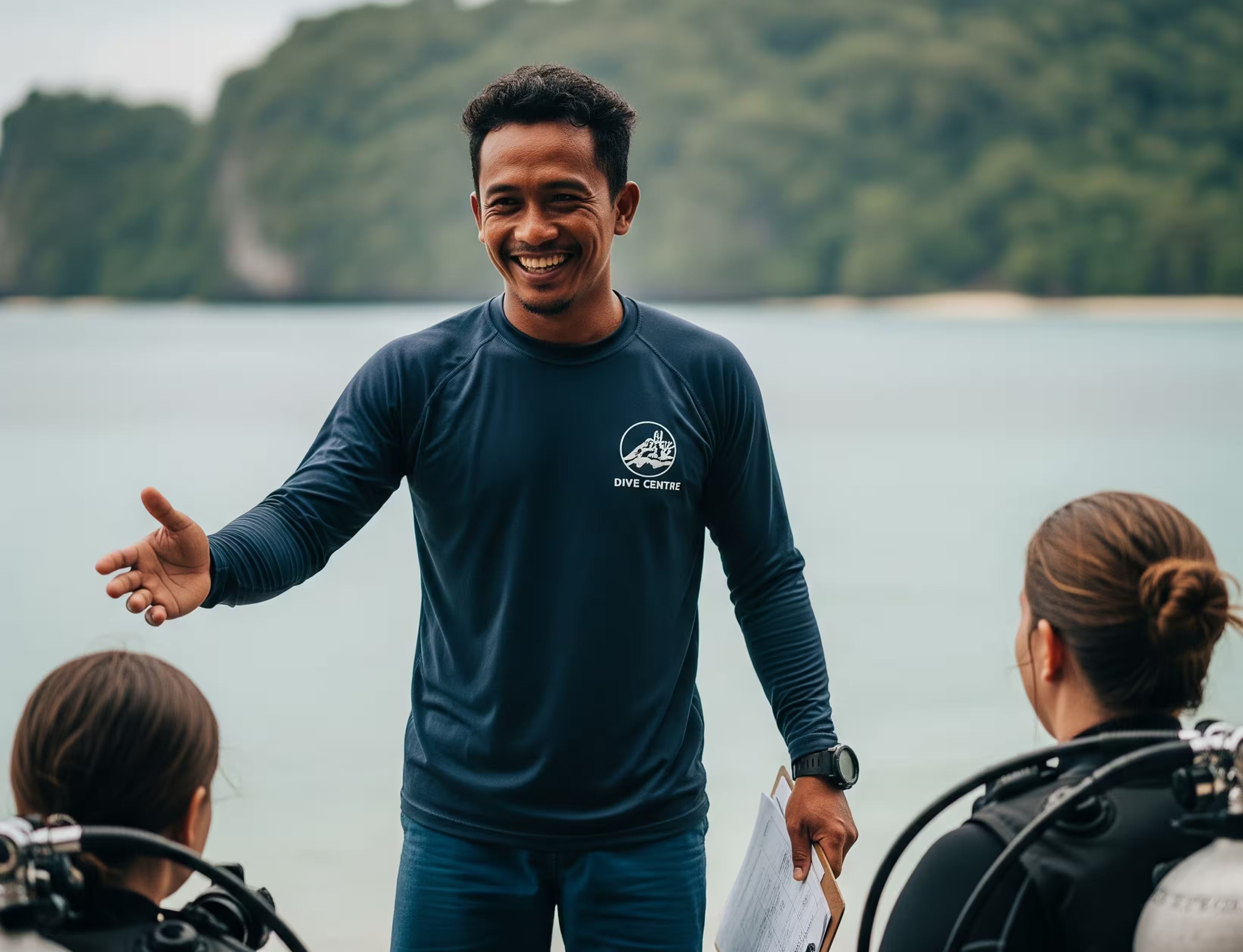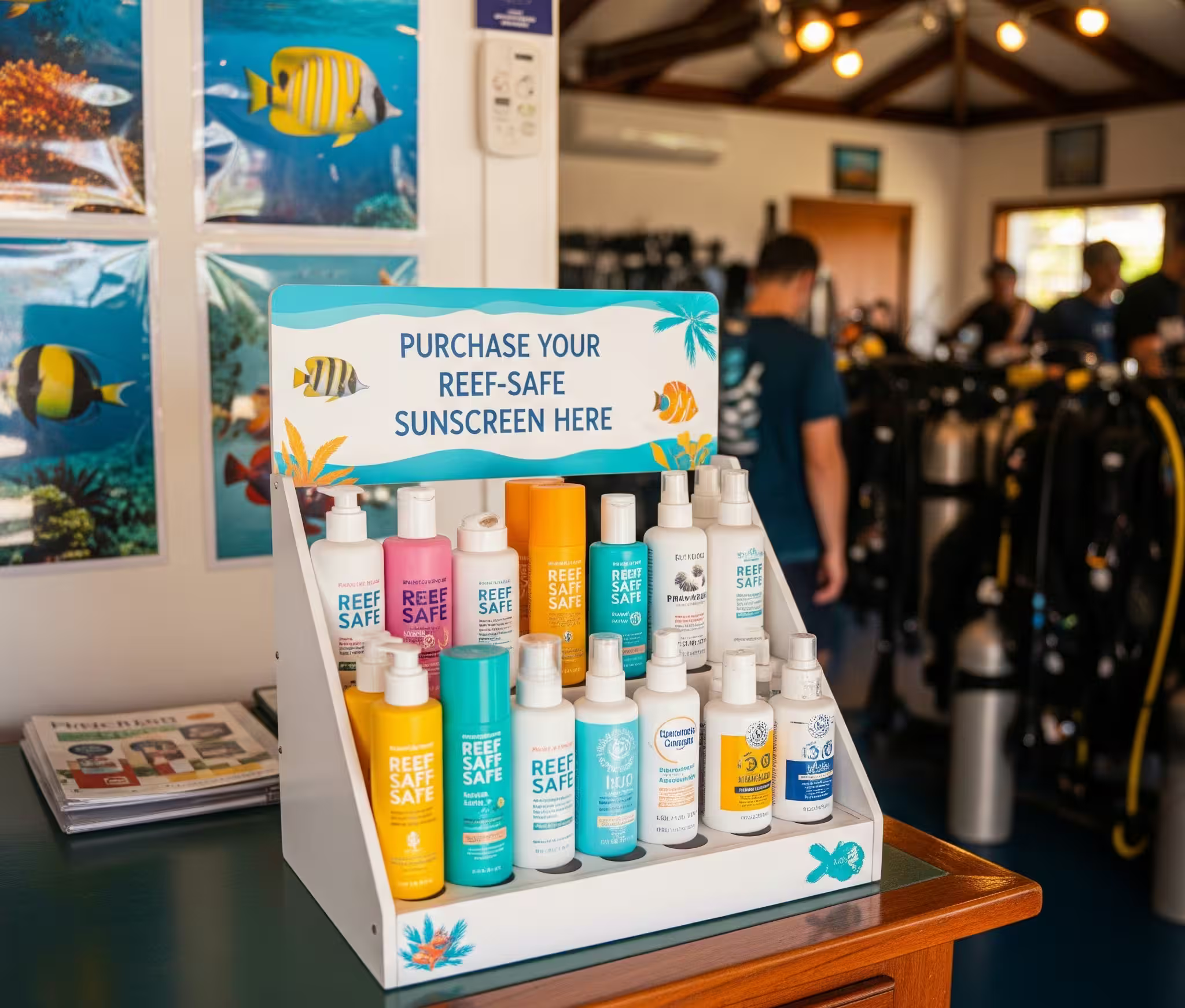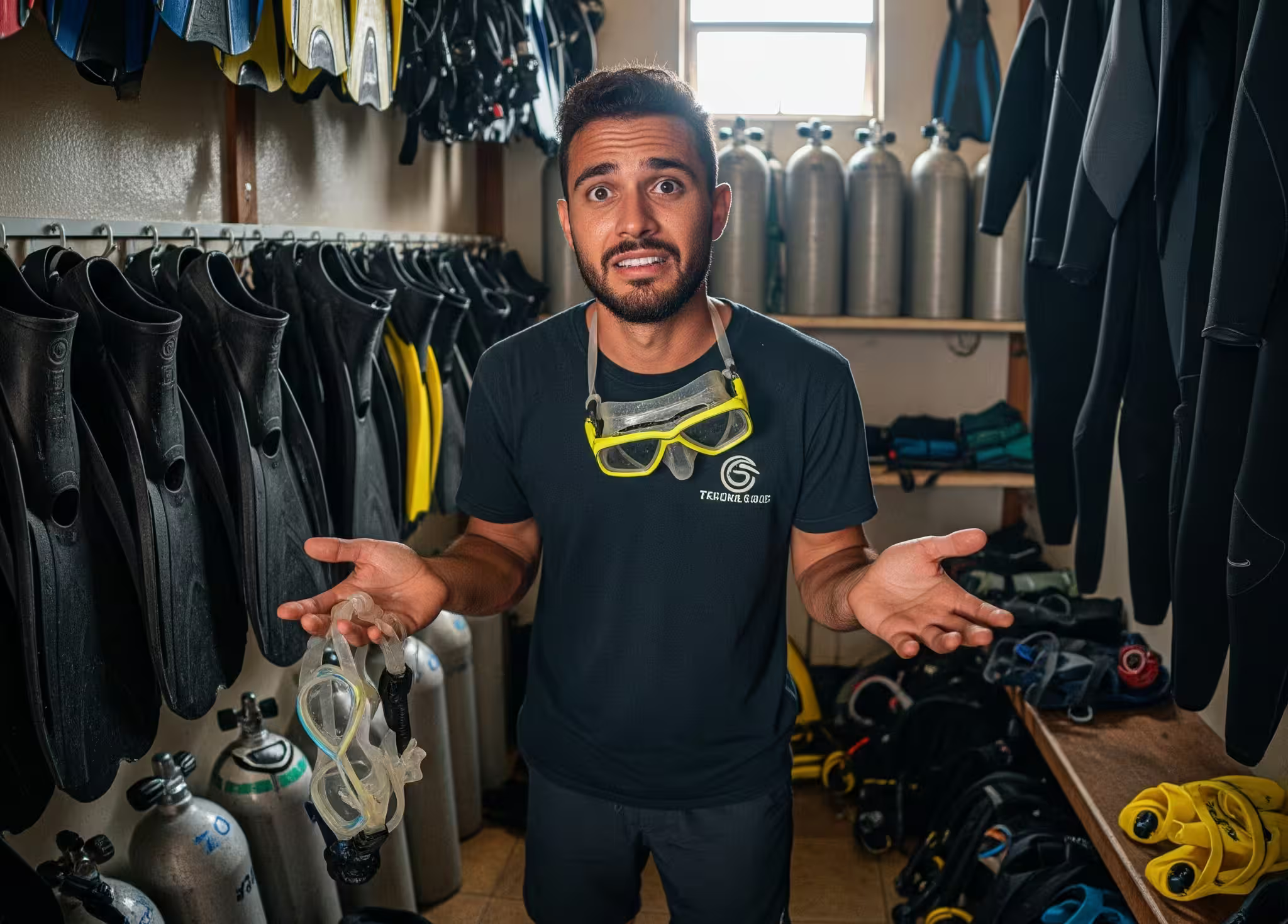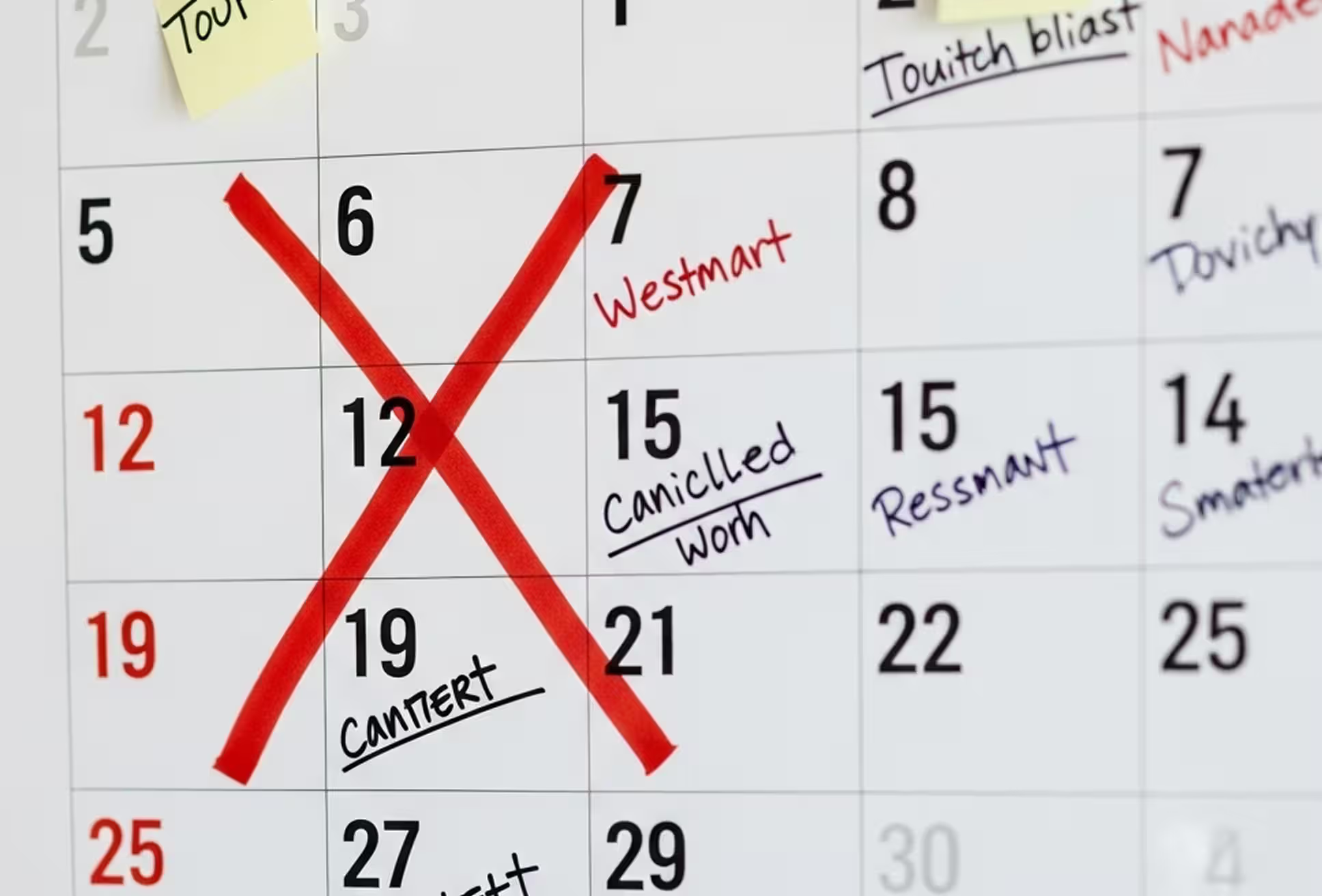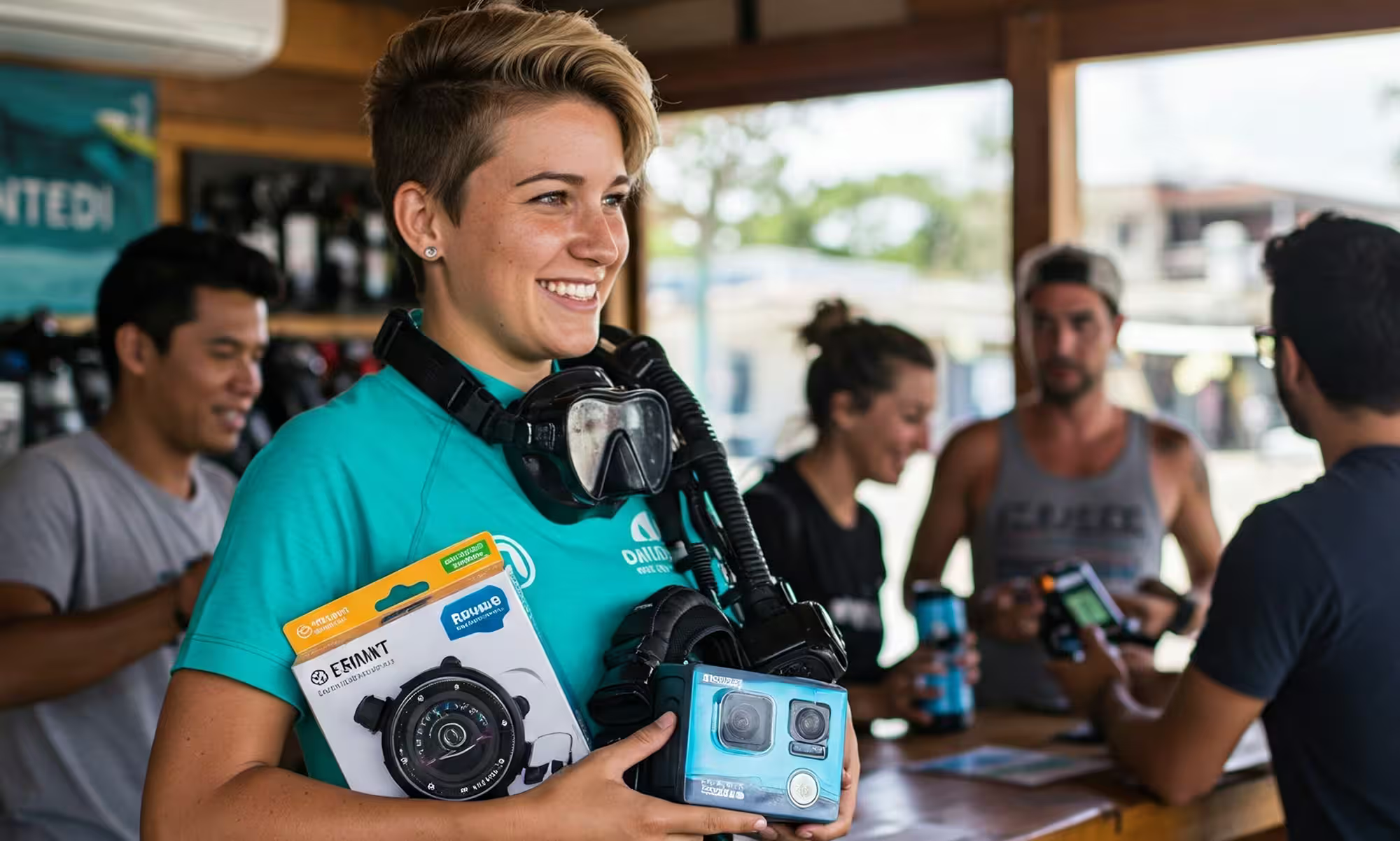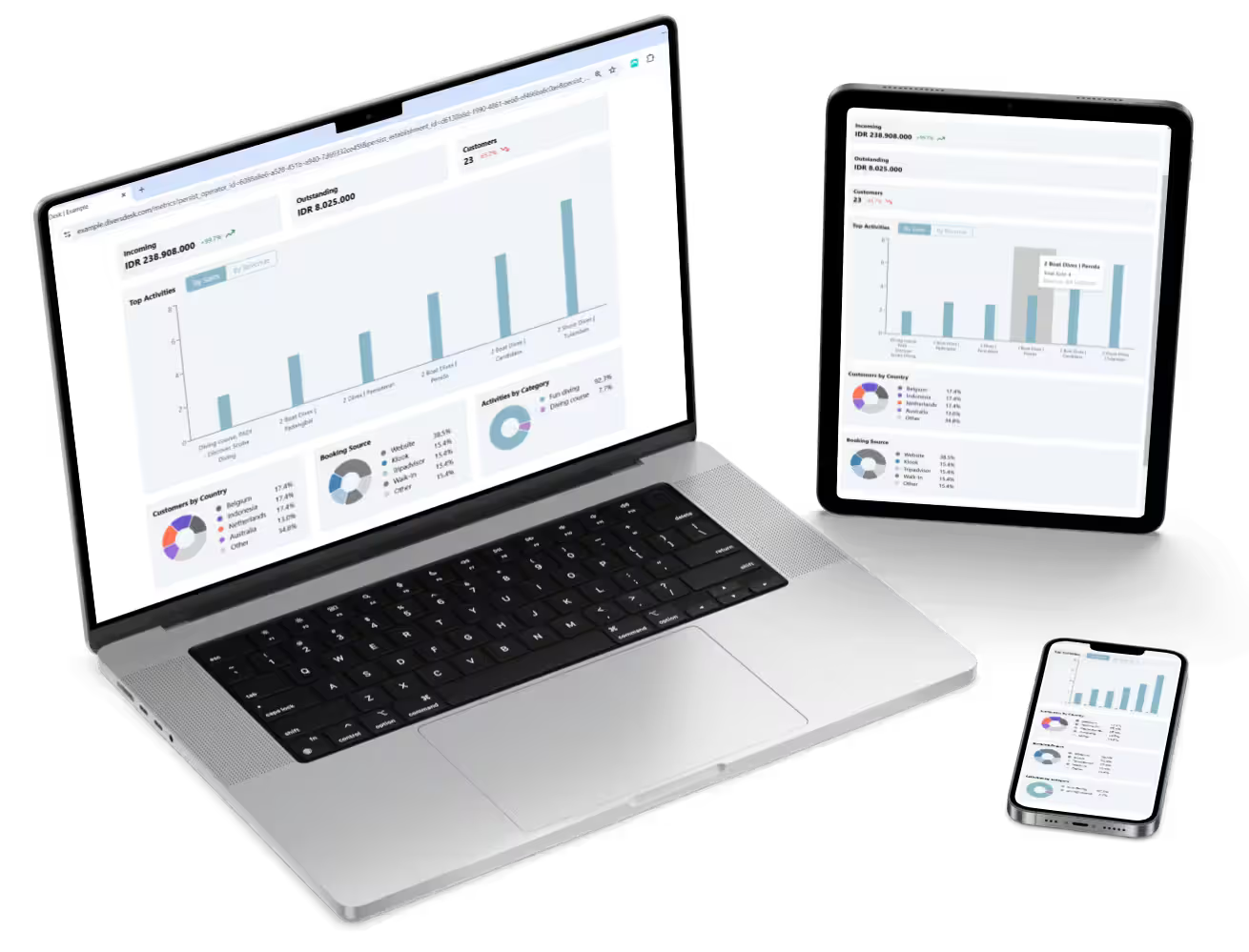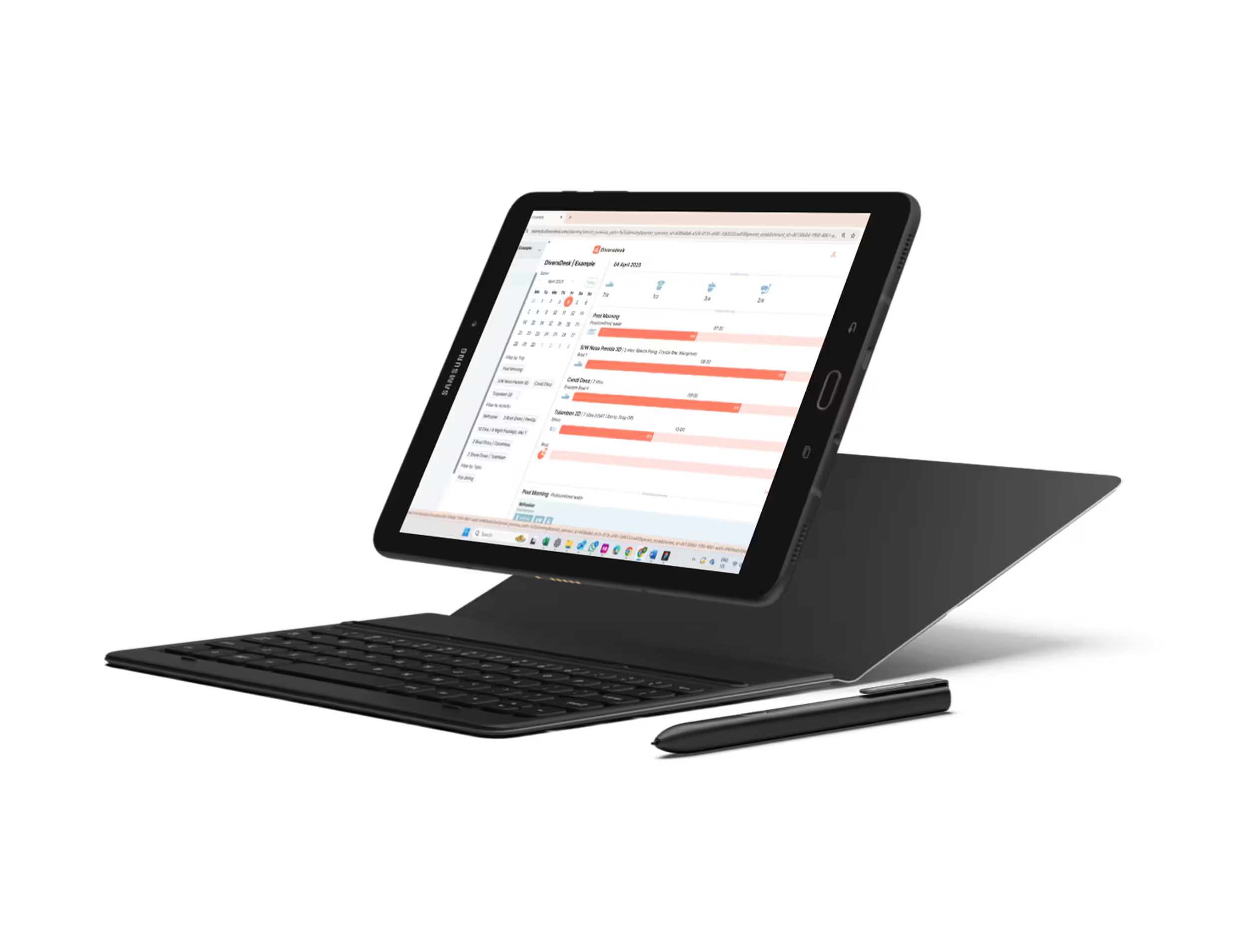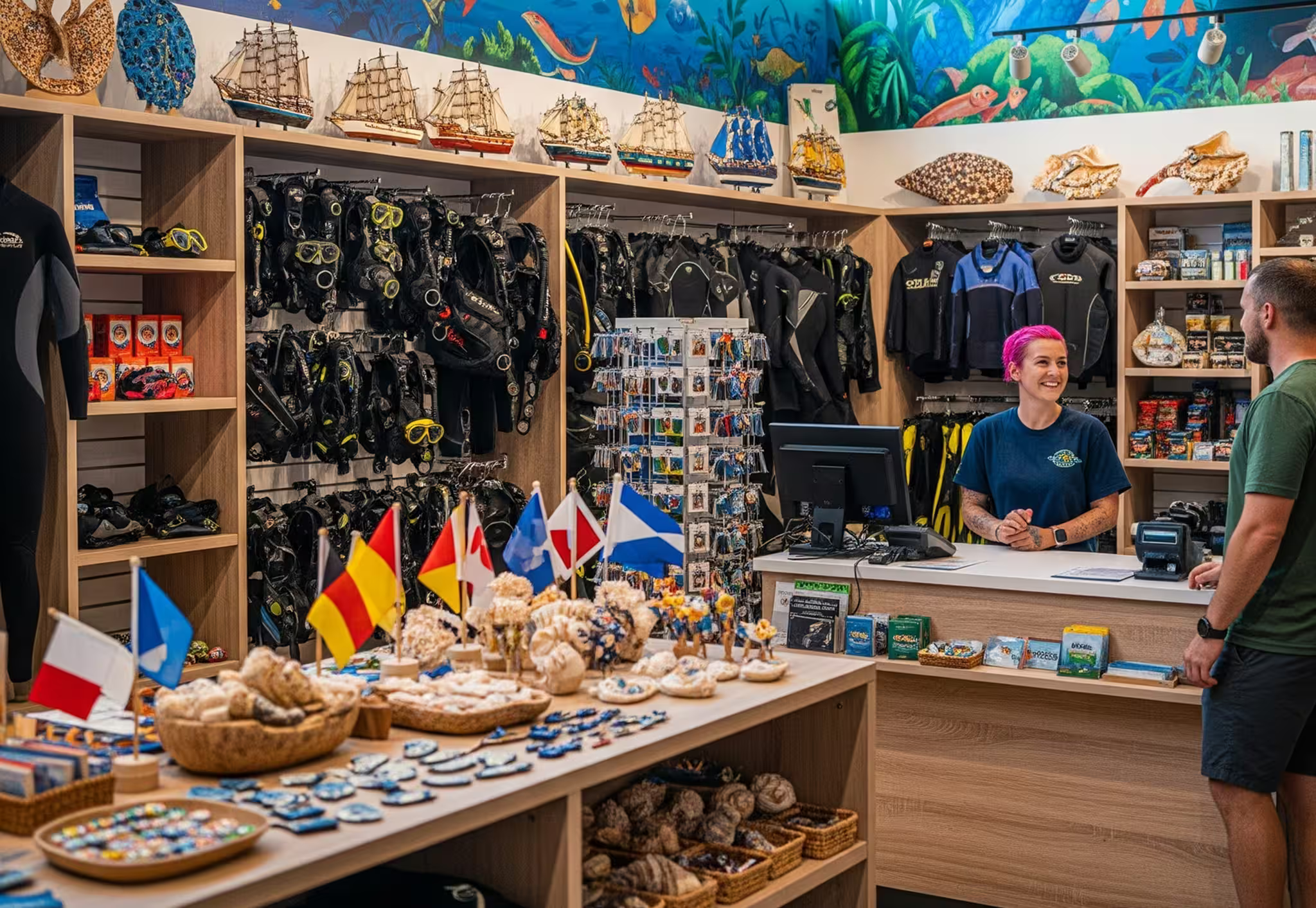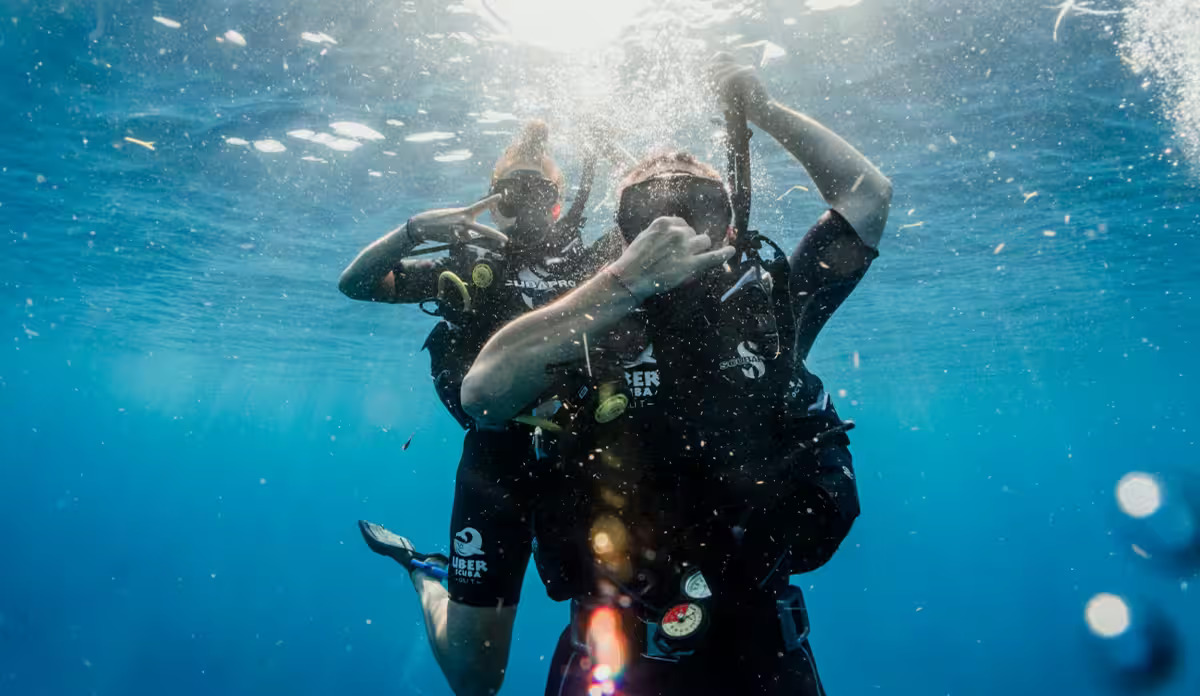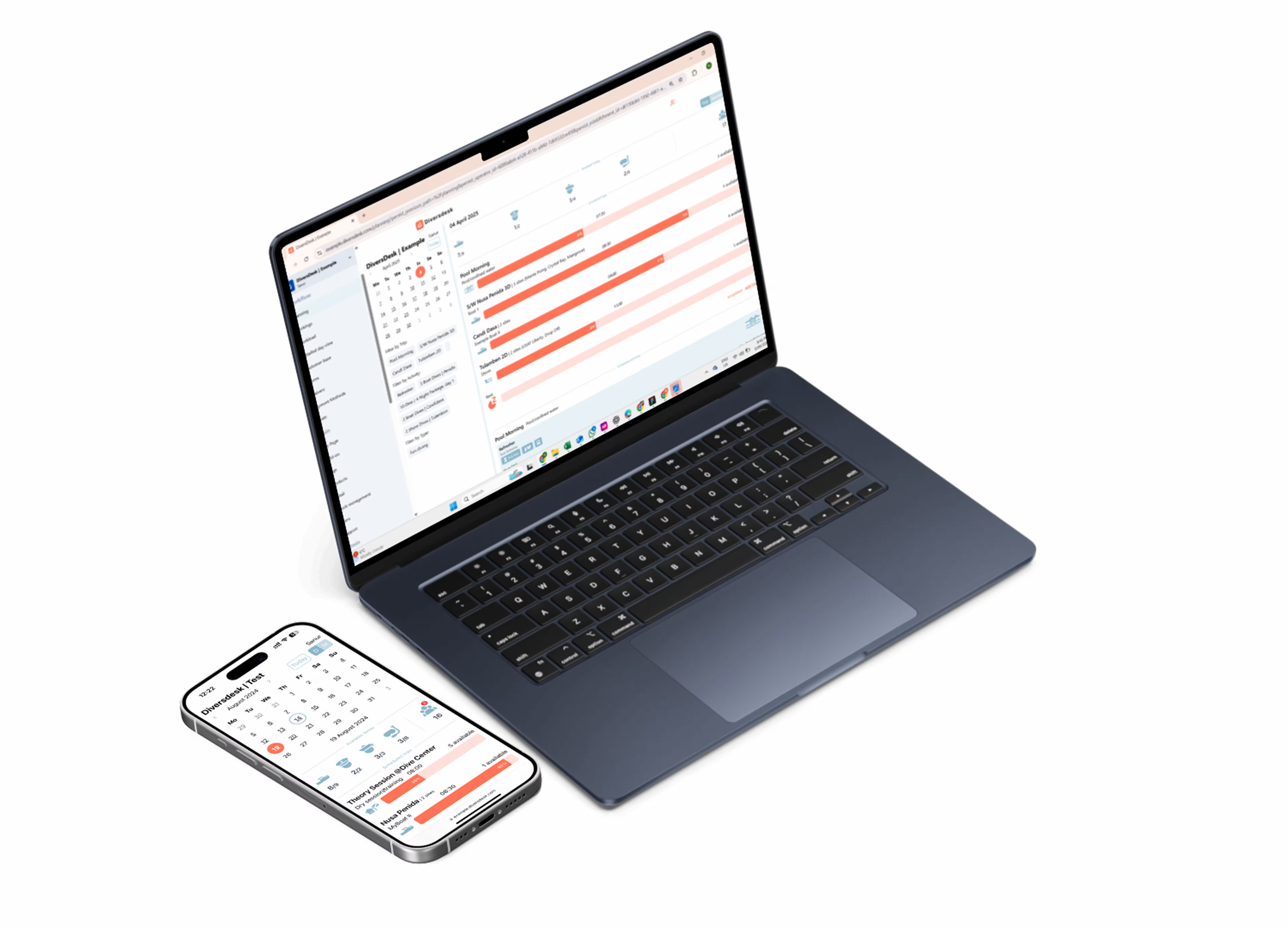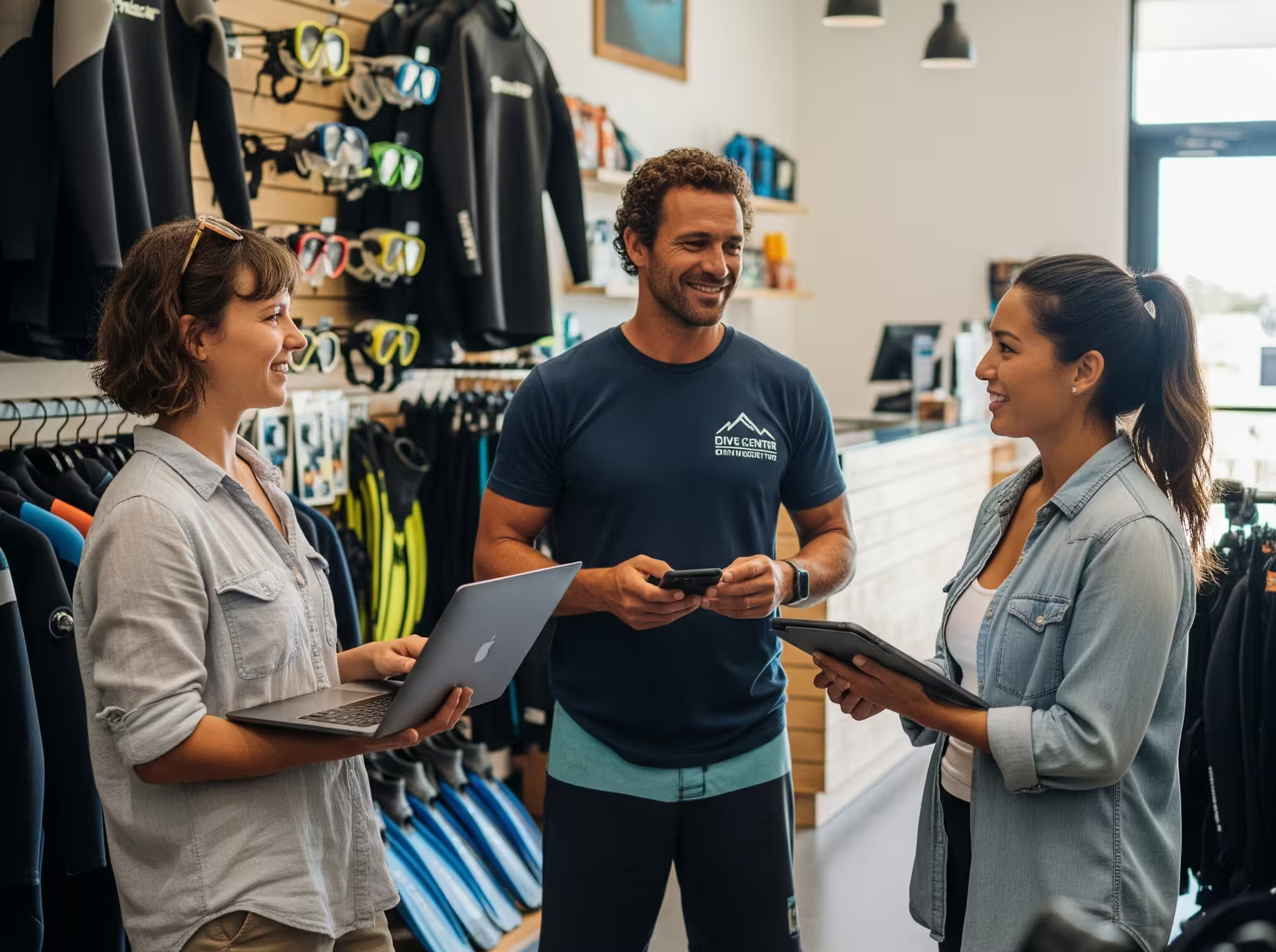1. Why SEO Can Help Your Dive Centre Get More Bookings
If you run a dive centre, showing up on Google is no longer just a nice bonus. In my opinion, it is important. Most divers start their search online by typing something like fun dives Nusa Penida or Open Water course in Komodo. If your website does not show up on that first page, you are probably missing out on bookings every single day. If you have already read our article on how to leverage social media for your dive centre, now is a good time to take the next step. Let’s make sure your website is just as easy to find. That is where SEO comes in.
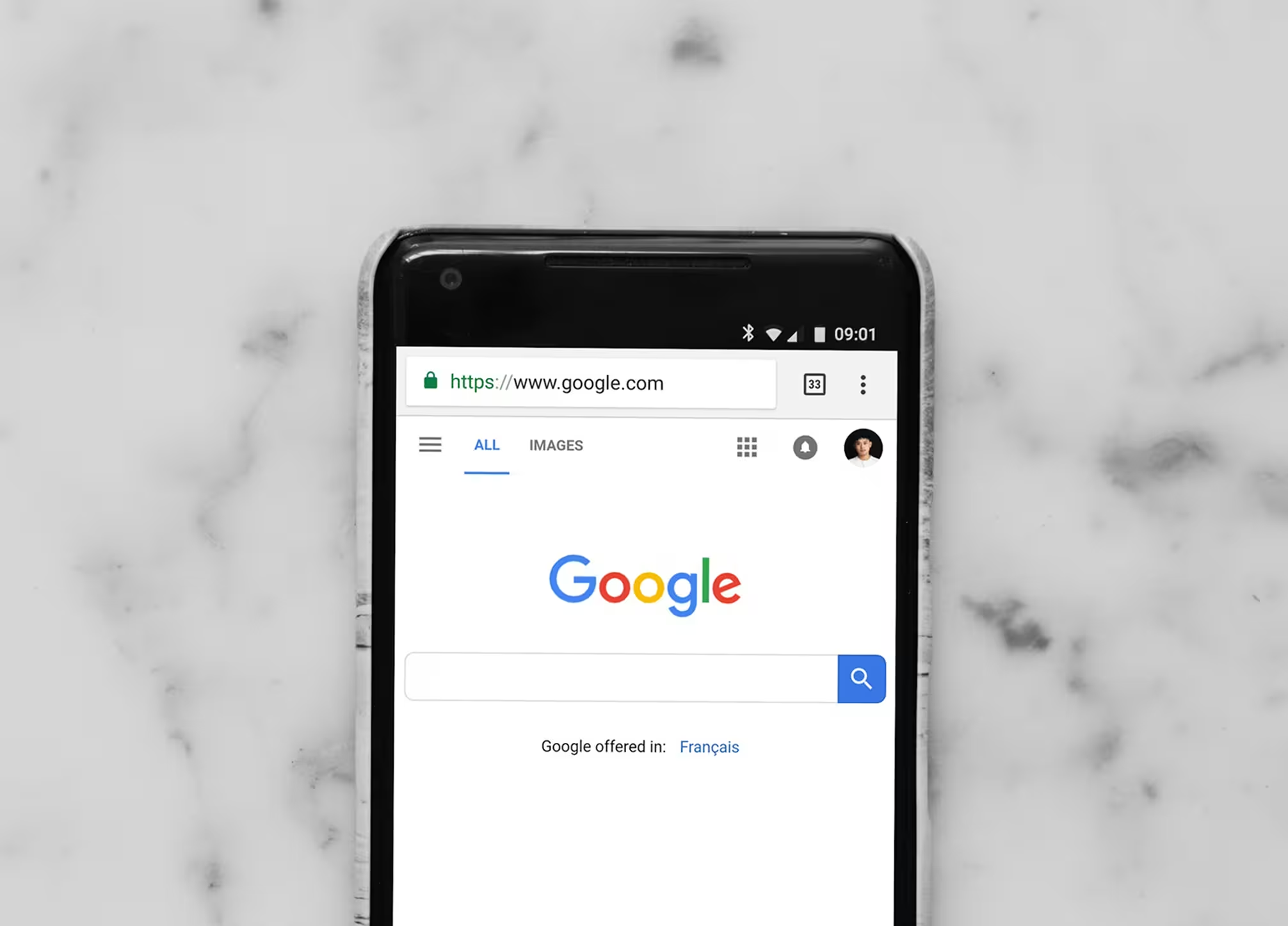
SEO, or Search Engine Optimization, is how you help Google understand your website and match it to the right people. Research shows that more than 75 percent of users never scroll past the first page of search results (source), which means if you are not there, they probably will not find you. Think of Google as a giant library. Your website is a book, and SEO is how you write the label on the spine. If that label is missing or vague, people will not find you, no matter how good your services are. The following tips are easy to apply for beginnes and actually make a difference.
2. Start with Clear Page Titles
Every page on your website has a title. It is the first thing Google notices and it also shows up in the browser tab. If your homepage title just says something like “Welcome” or “Home,” it does not tell Google anything useful. In my opinion, a stronger title would be something like “Scuba Diving in Nusa Lembongan | [Your Dive Centre Name].” That makes it clear what the page is about and where you are based. You can check your titles by hovering over the browser tab or using a free SEO tool. If they feel vague or generic, it is worth updating them. It is a small detail that can make a real difference in helping people find your site.
3. Write Meta Descriptions That Make Sense
The meta description is the short text that appears under your page title in Google search results. It does not directly affect your ranking, but in my opinion, it plays a big role in whether someone clicks your link. According to Google’s official guide, it should give people a clear and relevant summary of what your page is about. Keep it simple. Describe what the page offers and include one or two keywords naturally. For example, “Join our dive shop in Amed for Open Water and Advanced courses, guided fun dives, and friendly local instructors.” If your website builder lets you set meta descriptions, take the time to write one for each main page. If not, ask the person who built your site to help. It is a small detail that can help your site stand out.
4. Add Alt Text to Your Photos
Google cannot actually see your underwater photos, so it relies on text to understand what is in each image. That is where alt text comes in. It is a short description you add to every photo to tell search engines and screen readers what the image shows. For example, “diver swimming with manta rays in Nusa Penida” is much more helpful than something like “image123.” Adding alt text supports your SEO and also makes your website more accessible for people using screen readers.
5. Make Sure Your Website Works on Mobile
Most of your guests are searching on their phones, especially when they are already traveling. If your website is slow, hard to read, or difficult to use on a small screen, they will leave and probably not come back. Google also pays attention to that kind of behavior. In my opinion, a mobile-friendly site is non-negotiable. It should load quickly, display text clearly, and have buttons that are easy to tap. Check it on your own phone. Can you find the booking button easily? Can you open the menu without trouble? If the answer is no, it is time to update the layout or switch to a template that works better on mobile.
6. Keep Your Website Fast
A slow website can be frustrating for your guests and it can also hurt your rankings. Google prefers fast sites because people do too. In many cases, large image files are the main reason for slow loading times. Try compressing your photos before uploading them. If you use videos, keep them short or link them from YouTube instead of hosting them directly on your site. Avoid design elements that are too heavy or take too long to load.
To check how your website is performing, use a free tool like PageSpeed Insights. It gives you clear suggestions and shows what needs improvement.
7. Create Helpful Blog Posts to Support Your SEO
In my experience, writing blog posts is one of the most natural ways to help more people find your dive centre. It does not have to be perfect or polished. You are not writing for other dive pros. You are writing for someone who is curious, maybe a little nervous, and trying to decide if diving with you is the right choice.
Start with the questions your guests already ask. What should I bring? Is it okay if I cannot swim well? What is the difference between a fun dive and a course? These are great topics. Keep it simple, add your local keywords, and link to your courses or contact page. Throw in a few photos from real guests or the team. The more real it feels, the better.
8. Use Location-Based Keywords
You are not trying to rank for broad terms like “scuba diving.” What you really want is to show up when someone searches for diving in your area. That is where local keywords make all the difference. Use phrases like “PADI courses in Amed,” “fun dives Nusa Lembongan,” or “snorkel trips Gili Air” throughout your site. These help Google understand exactly where you are and what you offer.
In my opinion, it is smart to include these phrases in your headings, image names, page content, and even in your URLs if you can. The more clearly your site reflects what people are actually searching for, the better your chances of showing up when it matters.
9. Optimise Your Google Business Profile
In my opinion, this is one of the easiest and most effective ways to get more visibility online. Claim your Google Business Profile and make sure everything is up to date. That means adding your website link, phone number, opening hours, and a few current photos that show what your dive centre looks like.
Ask happy guests to leave a review after their dive and take a moment to reply with a thank you or something helpful. You can also post updates when you are running a course or offering something special. Your Business Profile helps you show up in Google Maps and the local results section, which is where most tourists look when they are already nearby and ready to book.

10. Final Thoughts
SEO does not have to be complicated. You do not need to be an expert or spend hours on technical fixes. But you do need to care about how your business shows up online. A few small changes can make a real difference.
In my opinion, if you take the time to do the things I have shared here, like writing clearer titles, adding proper descriptions, tidying up your images, and making sure your site works well on mobile, you are already ahead of most. These small steps make it easier for people to find you and help Google trust what you offer.
The best part is that once you set it up properly, SEO keeps working quietly in the background. You start to get more visibility, more clicks, and more divers walking through your door. Pick one thing to fix this week. Maybe update your homepage title or compress a few images. Then keep going from there. If you stay consistent, your rankings will improve and your dive centre will be right where it needs to be when people are ready to book.
Keep in touch with Diversdesk and explore the blog section to get more tips on how to grow your dive business and reach more divers online!

